David Woodhead | Interview | Perth County Conspiracy, Stan Rogers …
David Woodhead’s name is listed on more than 300 projects and worked with many influential artists including Perth County Conspiracy, Stan Rogers, Oliver Schroer, Gil Scott-Heron, and David Sanborn.
His own music draws from the intimacy of the folk world, the harmonic sensibilities of jazz, and a sense of precision from classical arranging, with room for freedom in individual expression and improvisation. David’s Confabulation ensemble has a somewhat exotic and rambunctious nature, while the more recent Oriana Quartet is focused on taking a folk-jazz chamber music approach.
Growing up in a musical Montreal household with a collection of Folkways records, where his parents’ friends came over to play music for fun, he started playing ukulele and banjo at grade school assemblies. Childhood summers in Vermont gave him exposure to a piano player with a pile of rolls of popular and classical hits of the early twentieth century, an influence still apparent in his repertoire! There were music lessons on piano, violin and recorder, moving on to high school bands, then doing six-nighters in the Ottawa Valley.
After earning a degree in Geography, he moved to the countryside near Stratford, joining the ground-breaking Perth County Conspiracy (“does not exist”), which led to other contacts in the independent Ontario singer-songwriter scene and connecting with emerging songwriter Stan Rogers. Leaving the freelance Ontario scene behind, he lived on the West Coast for two years (1978-79) and developed his bass style in the trio Island, in which he was the main soloist. After the breakup of the band came a return to Ontario and extensive work with Sneezy Waters, Valdy. Brent Titcomb and Scott Merritt, eventually (1988) hooking up with Oliver Schroer, Don Ross and percussionist Mark Duggan, who were exploring new musical territory in the group Eye Music. The relationship with Oliver Schroer proved particularly enduring and David worked on most of his recordings through the following years, absorbing much inspiration.
Along the way there have been many fruitful learning experiences in the studio working with producer/engineers Daniel Lanois, Roma Baran (Laurie Anderson), Arthur Barrow (Frank Zappa), John Switzer (Jane Siberry), Stacy Heydon (David Bowie), Paul Mills (Stan Rogers), and Steve Rodby (Pat Metheny) – all people who took time to shape music and explain their philosophies and methods.
Was that you playing the bass up there? Oh, you’re delicious!” – Odetta
Would you like to talk about growing up? What was the local scene there? What are some of the most important early influences for you?
David Woodhead: My parents were hugely influential, as they both played and listened to a wide variety of music. My Dad played piano and recorder, and Mom played piano and dabbled in cello and guitar – in fact I have and play her guitar, a nice Harmony nylon-string from the late fifties. They would have friends over to play classical or folk music from the books of the time – The Fireside Book of Folk Songs, The Weavers book and that kind of thing. They also listened to a lot of Folkways records – Pete Seeger, The Almanacs, New Lost City Ramblers, Joan Baez, Jean Ritchie – never the Kingston trio or Peter, Paul and Mary who they considered too commercial. There was a slightly academic curiosity, searching for history and “authenticity”. This was in Montreal and we had a summer place at an old farmhouse in Vermont about two hours away, where there was a player piano with rolls from the twenties – not the jazz twenties but things like On The Road To Mandalay (Kipling), Ramona, The Poet and Peasant, Hungarian Rhapsodies (Liszt), or Skater’s Waltz done as a foxtrot! So part of me feels like I grew up in the twenties.
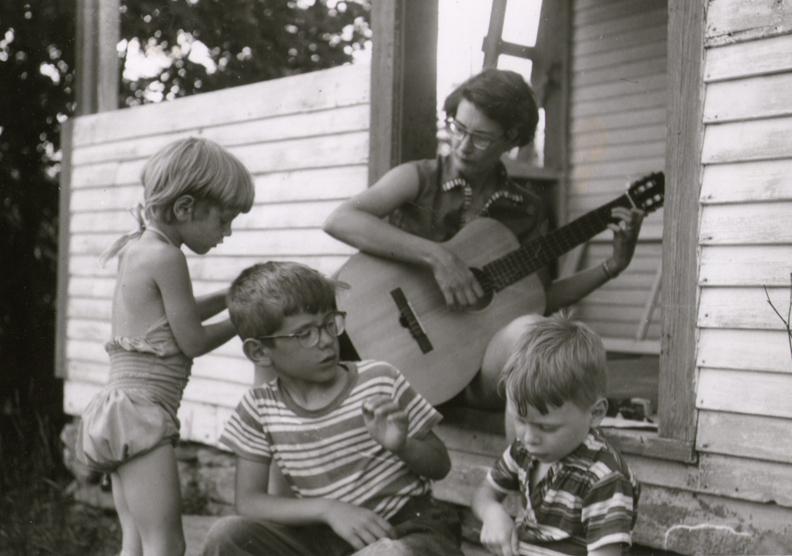
The first music concerts I remember were with my parents: Quebecois fiddler Jean Carignan, Pete Seeger with Sonny Terry, and Joan Baez, but by my teens I was going out with my friends to high school dances and saw bands like Bartholemew Plus Three (with drummer Corky Laing, later of Mountain), the Rabble, the Haunted, and the Staccatos – we were under drinking age but we could go to the New Penelope coffeehouse and see touring acts like the Paul Butterfield Blues Band with Elvin Bishop, Earth Opera from Boston, and the Fugs from New York. The Sidetrack was a local progressive blues band who we saw there many times, and we were taking notes from all this – like how to use an unwound slinky G string on the guitar to bend notes, so radical!
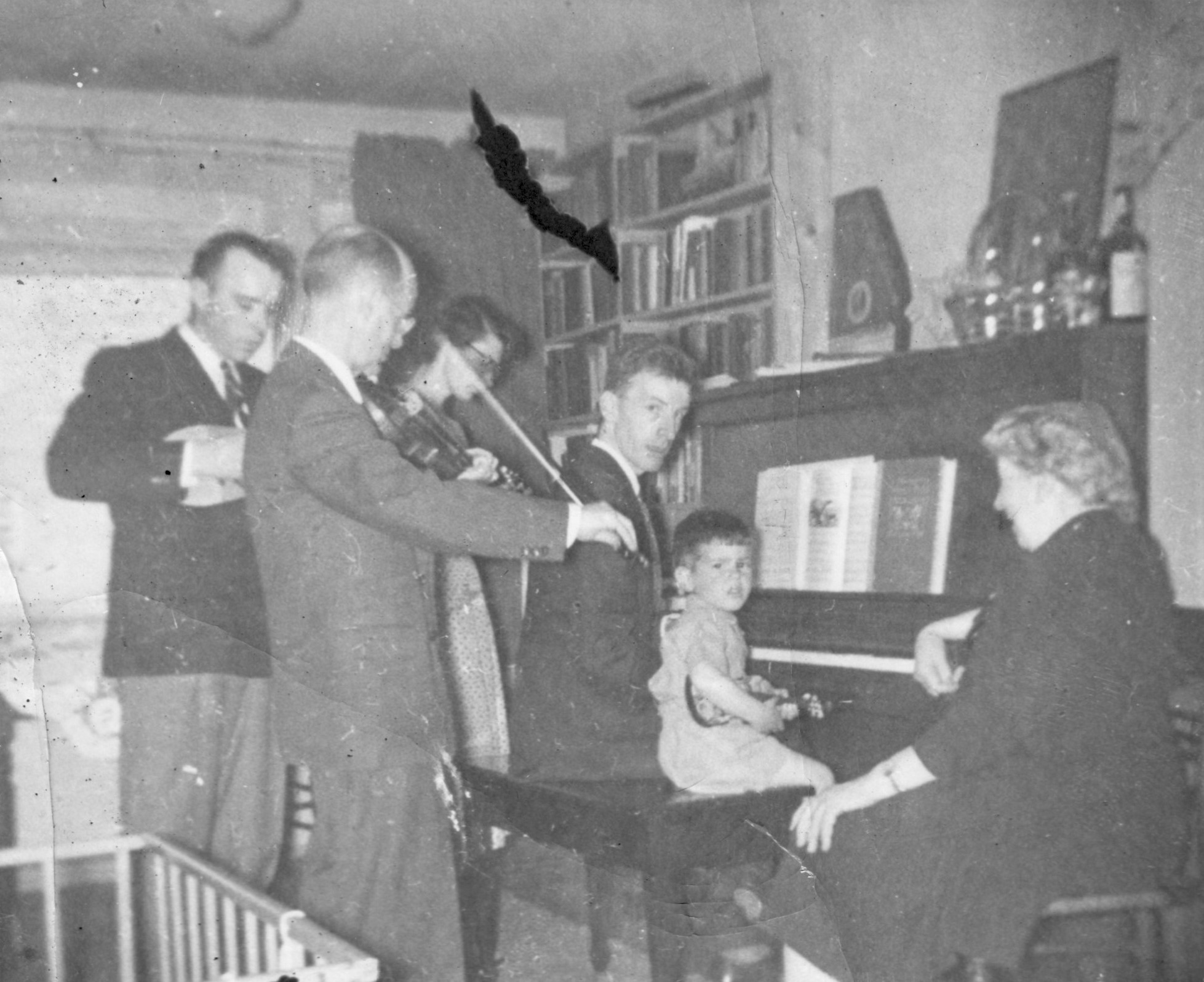
Was there a certain moment when you knew this was it and you picked an instrument and never stopped?
I can’t say it was a moment but a longer process, starting with taking piano from about age seven for a few years. I never acquired much chops as a piano player but one of my teachers, Mr. White, taught me some ear training – identifying intervals he’d play while I sat under the dining room table. Also, he was a church organist and I remember him actually saying, “when in doubt, fake!” Pretty rare for a piano teacher! As with most school stuff, I’d not practice much and sight-read my way through the lessons, which is okay to a point but there comes a time when I should have put some work into it… I got a ukulele at age ten, and a five-string banjo at twelve, and still played my Mom’s guitar until I got an electric and started playing in bands with friends at high school, and in fact I played last night with Bob Cohen, one of those friends. None of this was considered as leading to a lifetime career choice, though, it was all just for fun.
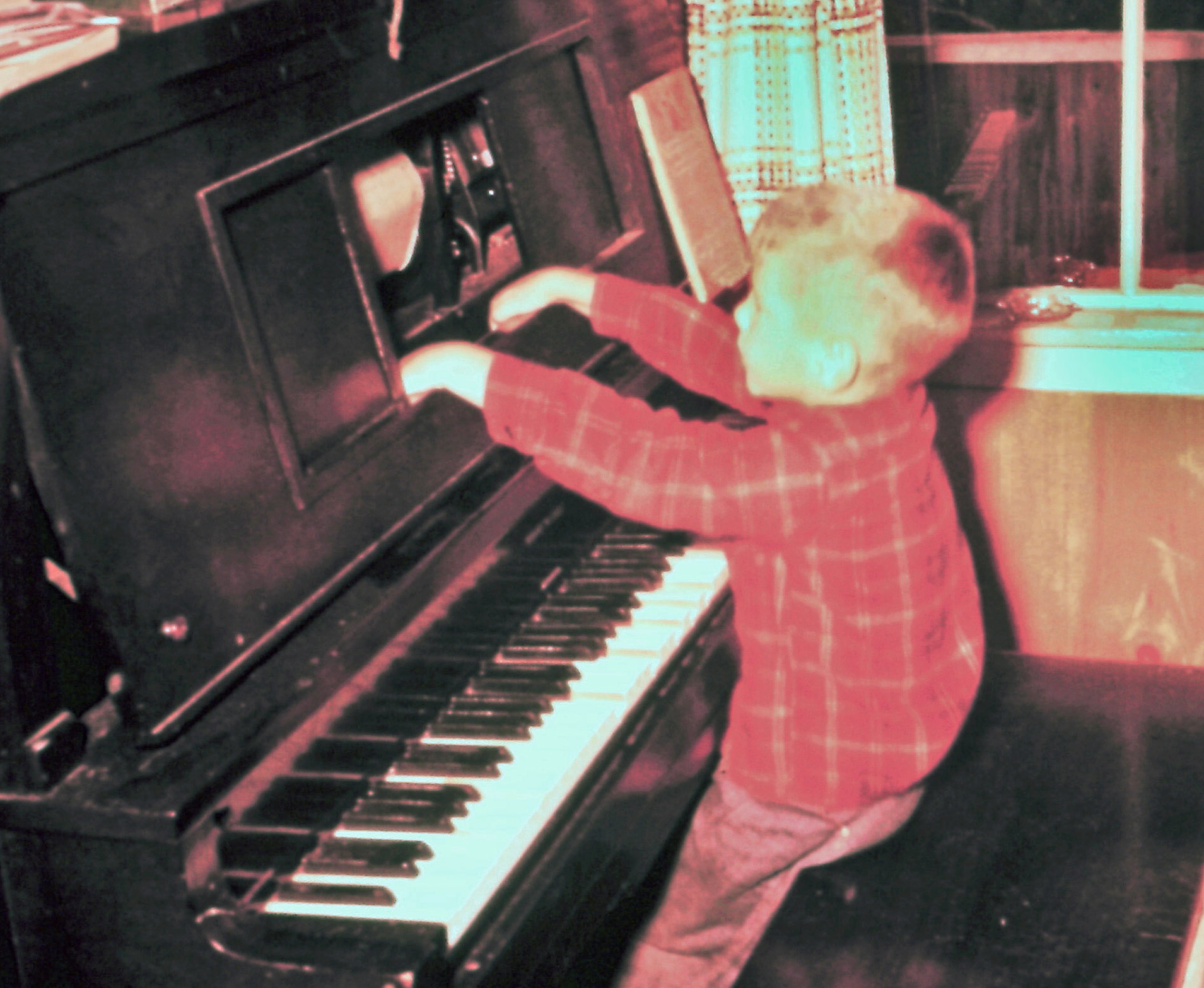
Did you originally play guitar and then turned to bass or what was the process of learning to play bass?
The bass was kind of mysterious to us and it was a while before anyone had one in high school – we’d play the bass parts on an electric guitar, in fact I remember one of the things that impressed my friends at first was my knowing the bass part to the Beatles’ ‘Eight Days A Week,’ sort of a walking boogie-woogie thing. In our first rock band, the Weeds, I was the rhythm guitar player (Bob Cohen played lead), but we shuffled things around to form Group Therapy which was psychedelic-blues based and I played bass in that. Even at the beginning my style was “busy” and we had no keyboard player so I had room to play around. By then I had a real bass – first a terrible Japanese hollow body, then a Hagstrom which I played right through Perth County – I still have it and it’s great.
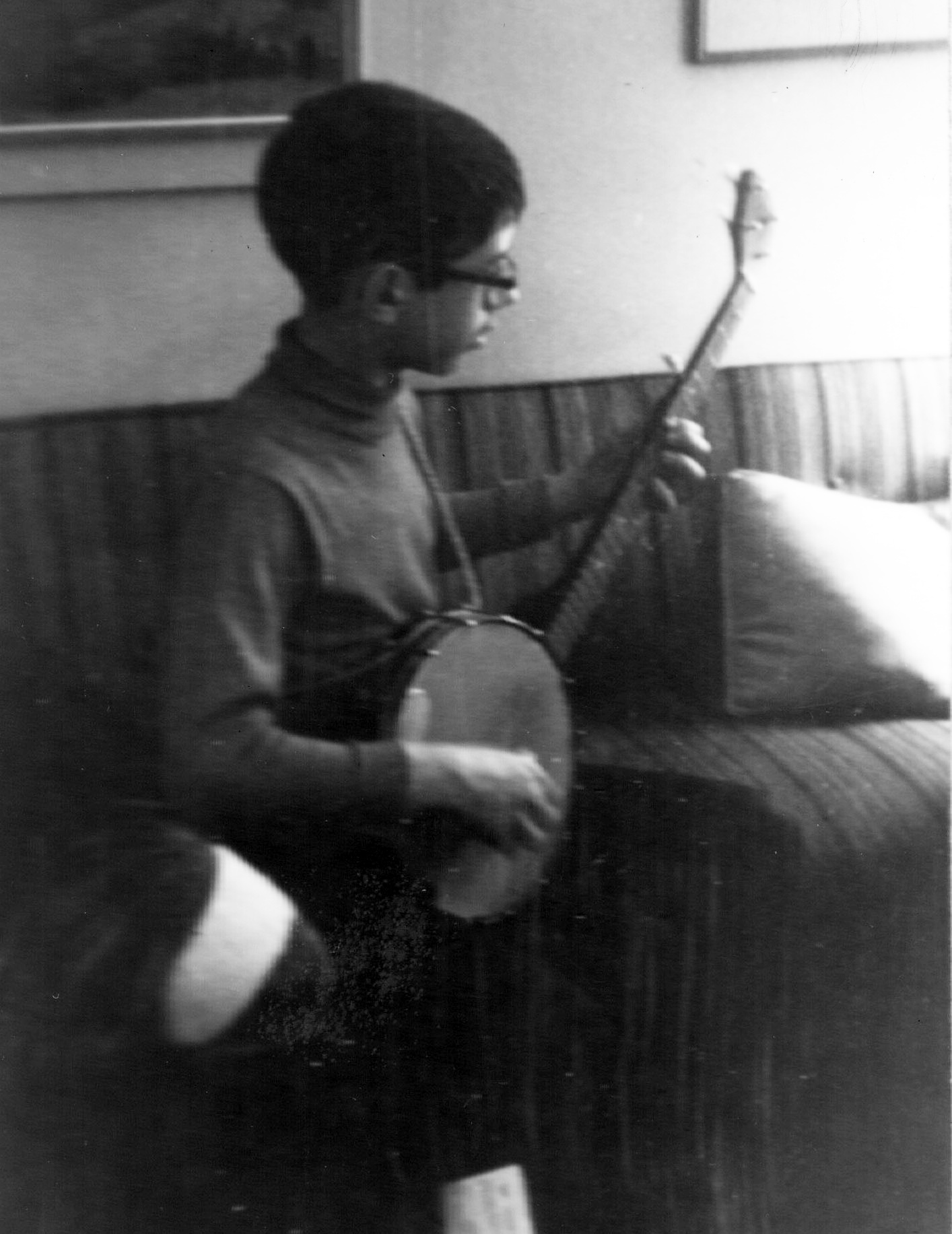
Were you in any bands back in the late 60s and early 70s before joining Perth County Conspiracy?
The Weeds, our first rock band in high school, was very much British Invasion style, doing Rolling Stones, Kinks, with easy American material like ‘Walkin’ the Dog,’ or ‘High Heel Sneakers’ – that’s what we were able to play, the Beatles material was too hard to make sound good and we couldn’t sing like that! Group Therapy (there were several bands with that name, and we weren’t one that would come up in a search!) was more psychedelic-blues-based, coming from the Yardbirds, Paul Butterfield’s East-West album, the Blues Project from New York, with longer solos and jamming sections. We were still underage but played some McGill University fraternity parties where they might have the strobe light going…pretty crazy for a bunch of sixteen-year-olds!
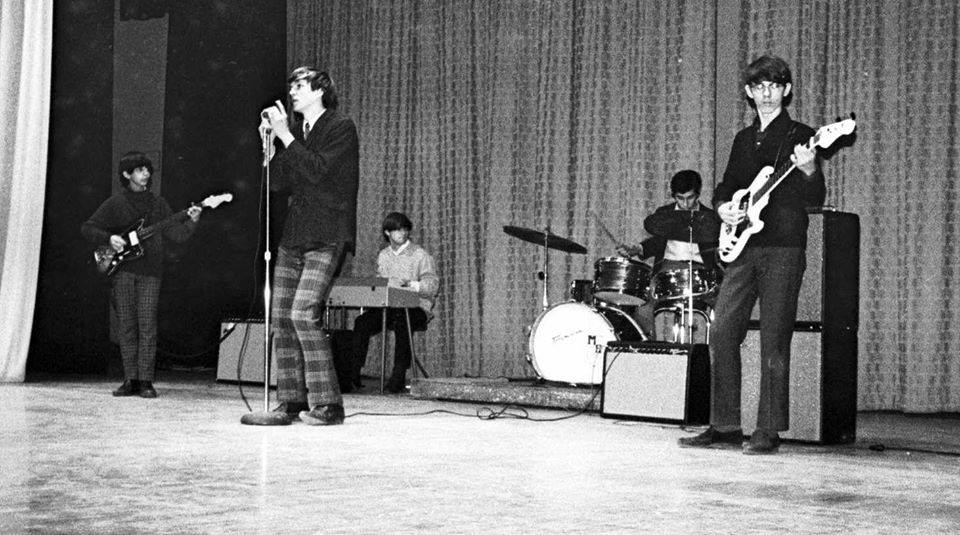
My Dad got moved by Bell Telephone from Montreal to Ottawa in 1968, and, though I went back to visit and play with my Montreal friends frequently, things musically kind of ground to a halt. Brandy Ayre, our singer in Group Therapy, started playing and writing folkier stuff, like Donovan or James Taylor, and I went to the UK with him in the fall of 1969 to make some connections happen, but I was more into the travel and hitchhiking around than getting into the London music scene, which seems kind of incredible now! Carnaby Street and the Beatles were kind of winding down, and I was more into exploring rural England – a pattern that was repeated later a few times.
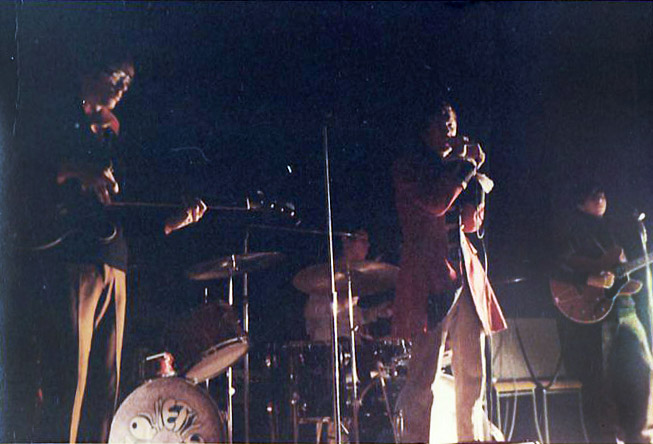
In Ottawa I played in a few informal bands, the most serious of which was Heaven’s Radio just for a few months – I really was not pursuing music at this point and I think they wanted more commitment, but it was a great blues band and the first guys I knew who played reggae.
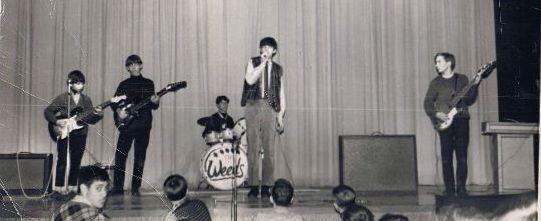
You went to study Geography? What was life like at University?
Yes, I got my BA in Geography at Carleton University, and I still enjoy seeing the world from an airplane window seat. I was going into cultural and historical geography, which got more and more interesting – why do people live and build these things in these places, and how do those structures evolve? I moved out from my parents’ place and started to make money playing in Ottawa Valley country-rock bar bands – six nights a week in Brockville, Smith’s Falls, Perth and other small towns. This is where I got a lot of education – keeping it together on stage no matter what, learning songs on the job with no rehearsal, and no matter if there’s just two people drinking beer for an audience.
How did you first get in touch with members of Perth County Conspiracy and what led you to join them?
One of the casual bands I was in, Hank Boogie and the Northstar, played a gig at Rooster’s Coffee House at Carleton University on a split bill with Free Cabaret, which featured poet-curmudgeon Jack Street and singer-songwriter Stephen Nesrallah. They were backed by pianist Judy Crocker and percussionist David Balser who also were regular Perth County members, and somehow I joined their group for the Rooster’s show and for the Hibou, which was Ottawa’s established coffeehouse where people like Joni Mitchell and Bruce Cockburn had played. We got along well musically and they invited me to come to Stratford any time, and a few months later I had a country gig down near Niagara which fell through so I drove to Stratford with my gear and that was that! I started right away playing with Terry Jones and Cedric Smith at the Black Swan and did the Perth County Conspiracy fall tour to the East Coast. Entirely a random sequence of events, but it changed my life completely.
A Perth County Conspiracy set list was unique – instead of a list of songs, it would be the first verse of a song, followed by an E minor vamp under a poem by Milton Acorn, then a chorus, then another song excerpt segueing into a piece from Ten Lost years, then back to the first song’s second verse… and notes would be taken to improve it for the next show. All with lighting cues from the homemade tin can lighting system which went everywhere with us in the school bus.
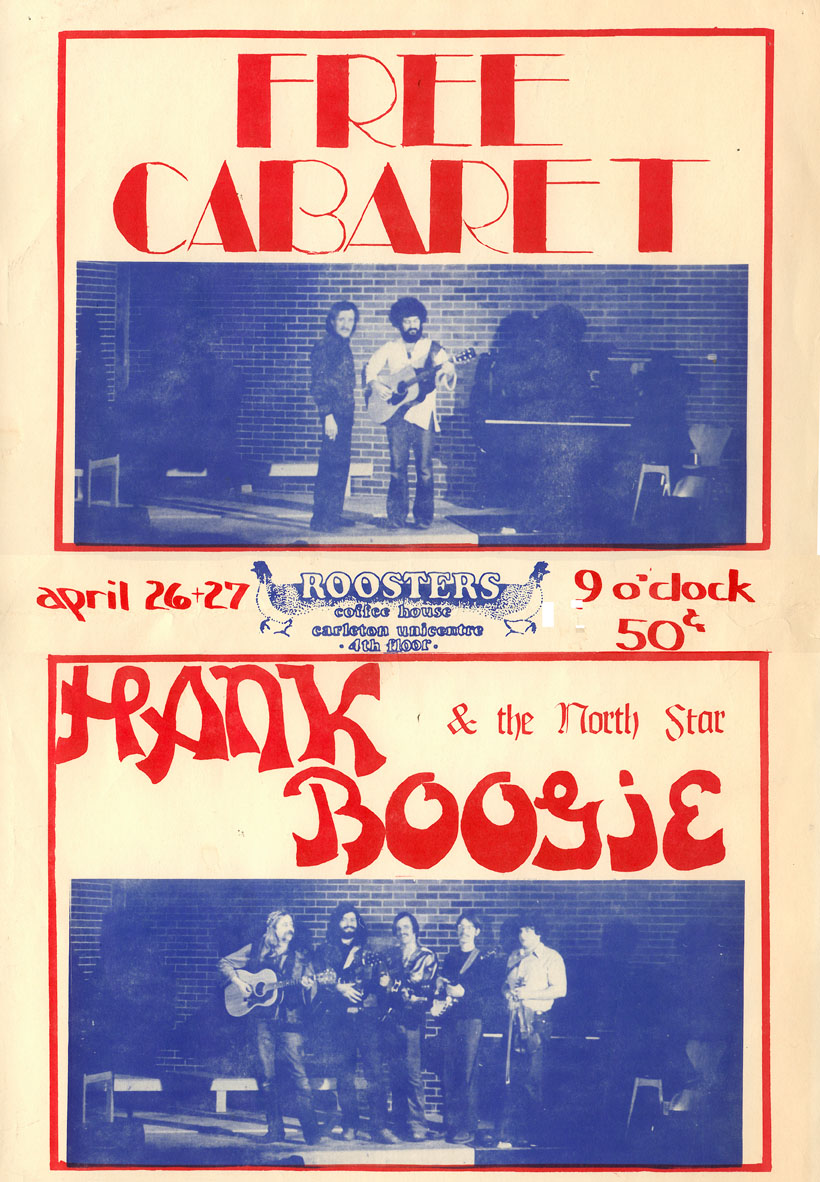
You also played on solo records by members of Perth County Conspiracy providing bass and banjo. What got you into banjo and how do you remember working on those albums?
That’s right, I’m not on any actual Perth County Conspiracy albums. By the summer of 1974, when I showed up, the group had split in two – one half with Richard Keelan (George Taros, Paul Gellman, Larry Brown, and David Balser) and the other half with Cedric Smith (Terry Jones and me) with others floating around like mime Peter Cheyne, Judy Crocker and Bob Burchill. So in the Fall of 1974 there were actually two simultaneous tours, Richard’s to the West and Cedric’s to the East, uniting for Massey Hall in Toronto and Alumni Hall in London, Ontario at which there about twelve musicians.
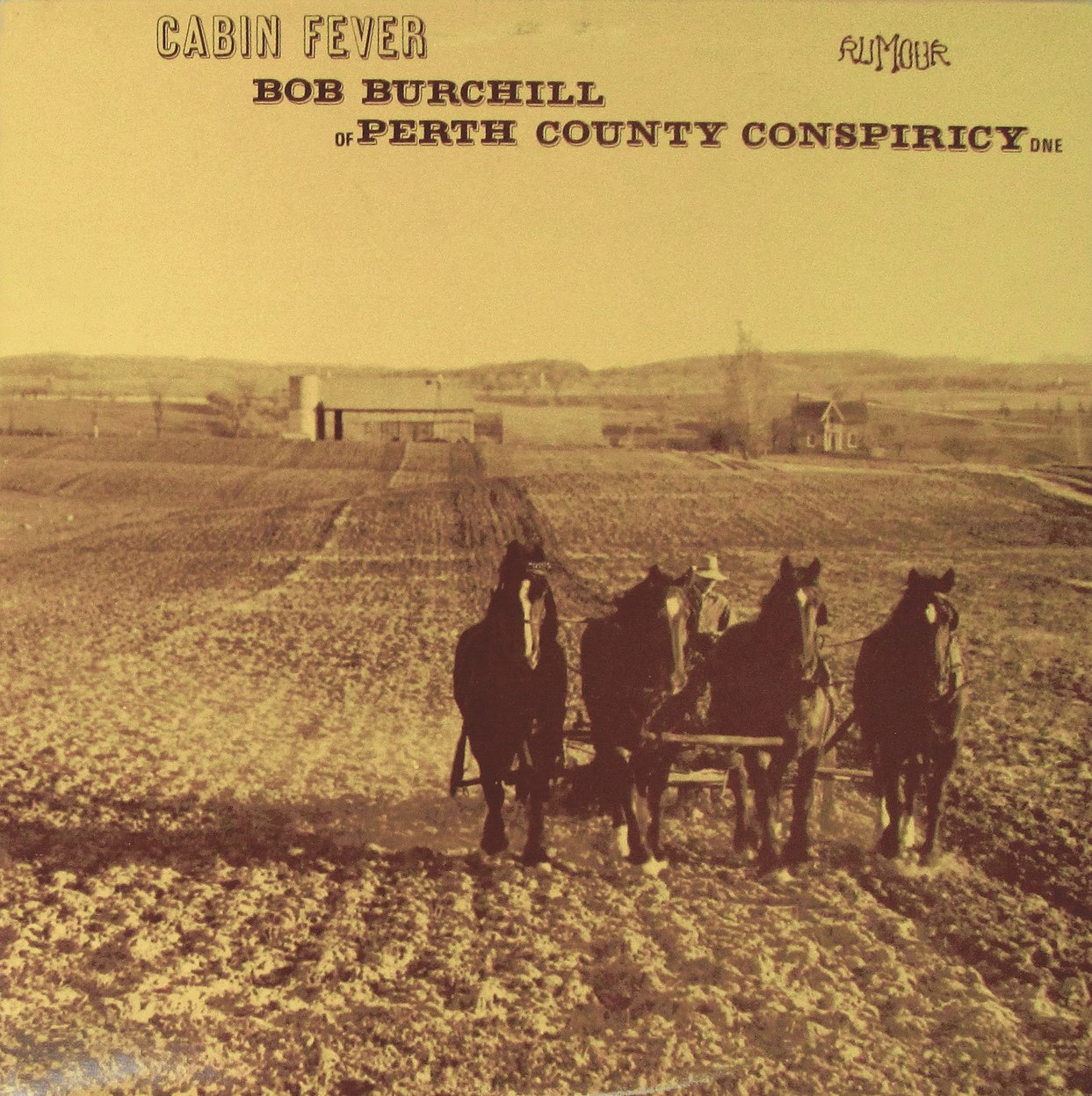
The first LP I was on was Bob Burchill’s ‘Cabin Fever,’ which we recorded at Schoolhouse Sound in the country near Stratford. Using a TEAC 3340S four track, some of the songs were live recordings which we overdubbed to and some were recorded from scratch. The studio was Paul Benedict’s, but I remember Gary McKeehan doing some of the engineering, too. Gary was a good connection-maker for the Perth County Conspiracy, and was responsible for some of the film and CBC work. Not so sure about his engineering, though! Soon after, we did the ‘Ten Lost Years and ‘Then Some’ LP at Thunder Sound in Toronto, using their small backroom studio.
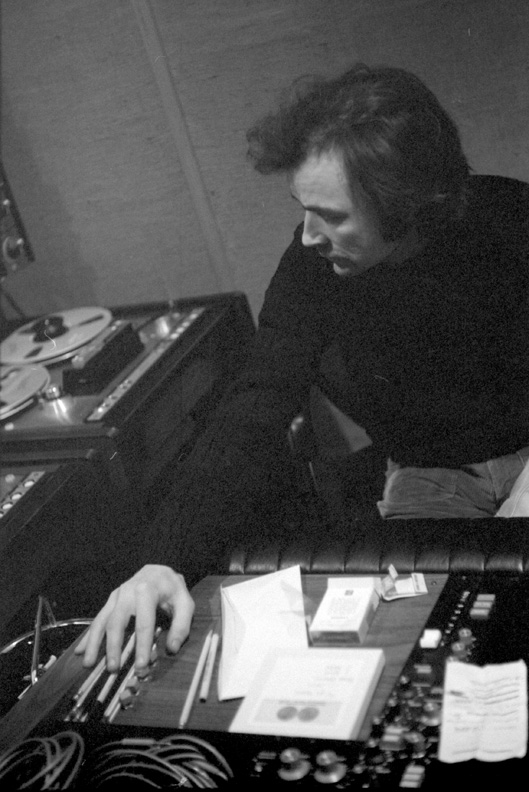
Half the album was material from the theatre production of Ten Lost Years, written by Cedric and Terry, and the other half was a mix of material they had – I was very much the miscellaneous-instrument guy, and played bass, banjo, mandola, autoharp and some guitar wherever something needed doing. Around this time Bob Burchill was evolving a regular band and that led to some recording, too.
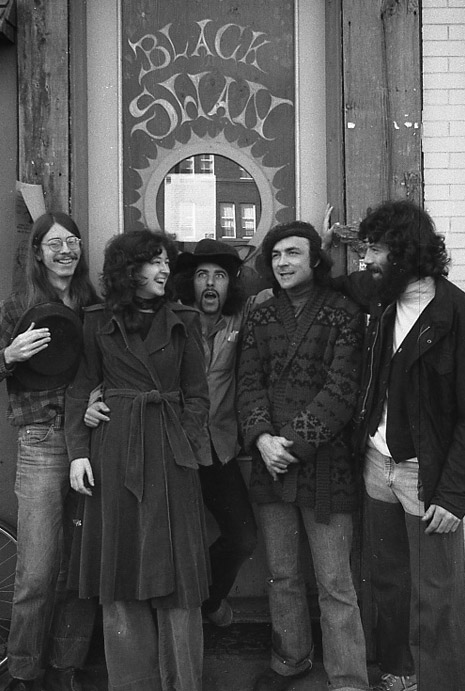
I started playing banjo around the time I started playing guitar, and got my Silvertone five-string in 1964 out of the Sears, Roebuck catalog. It was $37.50, top of the line. Terrible banjo. I always found it fascinating, so many metal parts, the asymmetrical fifth string and the connections to folklore and history. I never learned the clawhammer style, though, in spite of a few attempts. My thumb just won’t behave that way! I have a bunch of banjos and variants now, including a gourd banjo built by Teilhard Frost and an English Windsor-style five string that was Daisy DeBolt’s grandfather’s. I play tenor banjo now, too, in the Quebecois and Balfolk jams that we go to. The ukulele was a major re-discovery for me a little while back, finding that because of the high fourth string I could apply some banjo fingerstyle techniques and come up with an African kora kind of sound, not the strum-and-sing kind of ukulele playing at all.
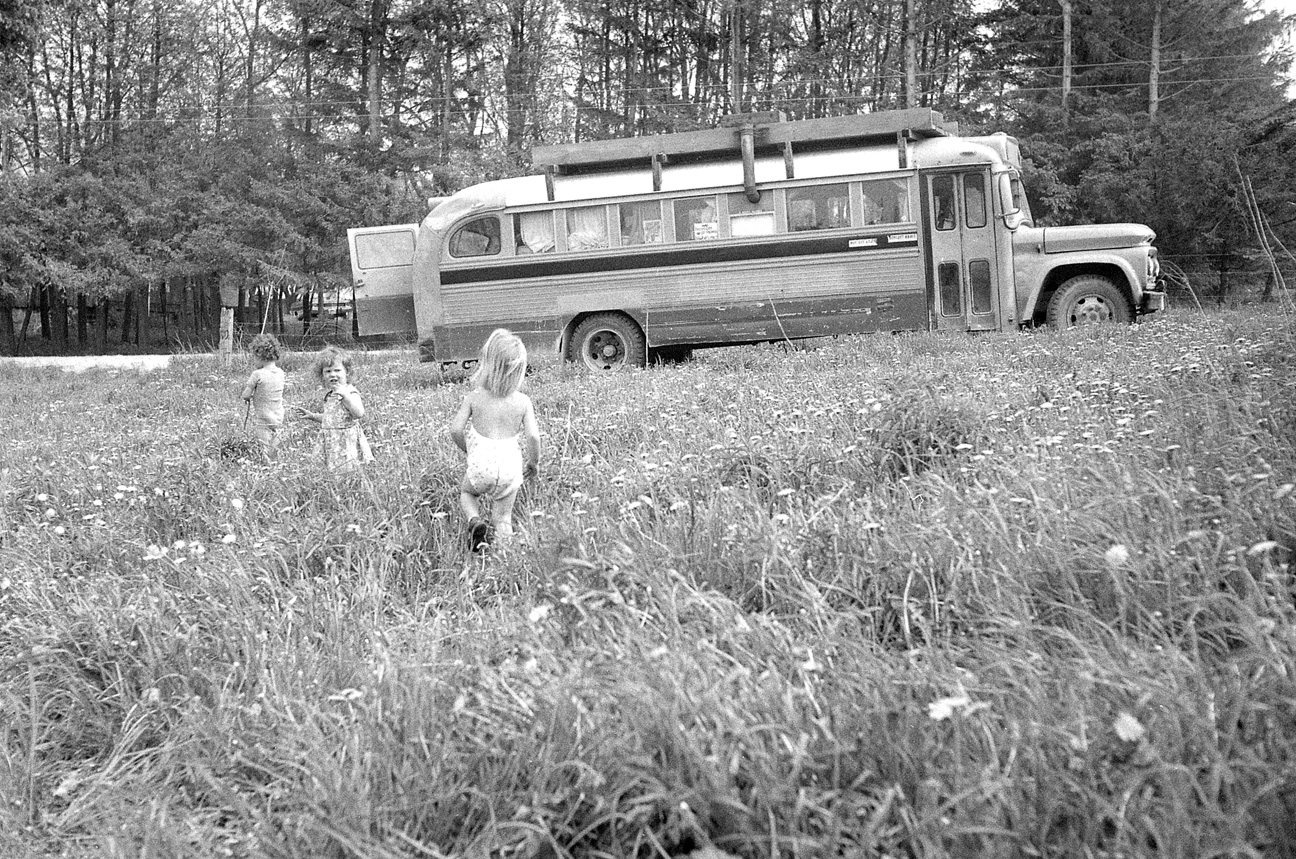
How did collaboration with Stan Rogers come about and speaking of him, tell us more about him.
Stan came around to the Black Swan coffee house in Stratford and our impression was that he was kind of square, with polyester pants or something – I think he was looking for a gig but I’m pretty sure he never played there. A little later, in early 1976, Cedric and Terry did a CBC broadcast recording for the Touch the Earth radio show that Sylvia Tyson (of Ian and Sylvia) hosted, and I played bass on that. I gather producer Paul Mills was impressed with my playing enough to recommend me to Stan, who was looking for a bass player for his trio with his brother Garnet. Another example of being in the right place at the right time! One of our first gigs was a two-week stand in a disco in Labrador City, about as remote a company mining town as you can imagine, but that meant we got really tight on Stan’s new material which we recorded that September. That’s also why the bass playing on that album is a bit hyperactive – Garnet’s fiddle playing was sweet and lyrical and left room for me to function as lead guitar player doing fills around the vocal, which is still something that comes very naturally to me playing with singer-songwriters, but unpopular with those expecting a conventional rhythm section approach!
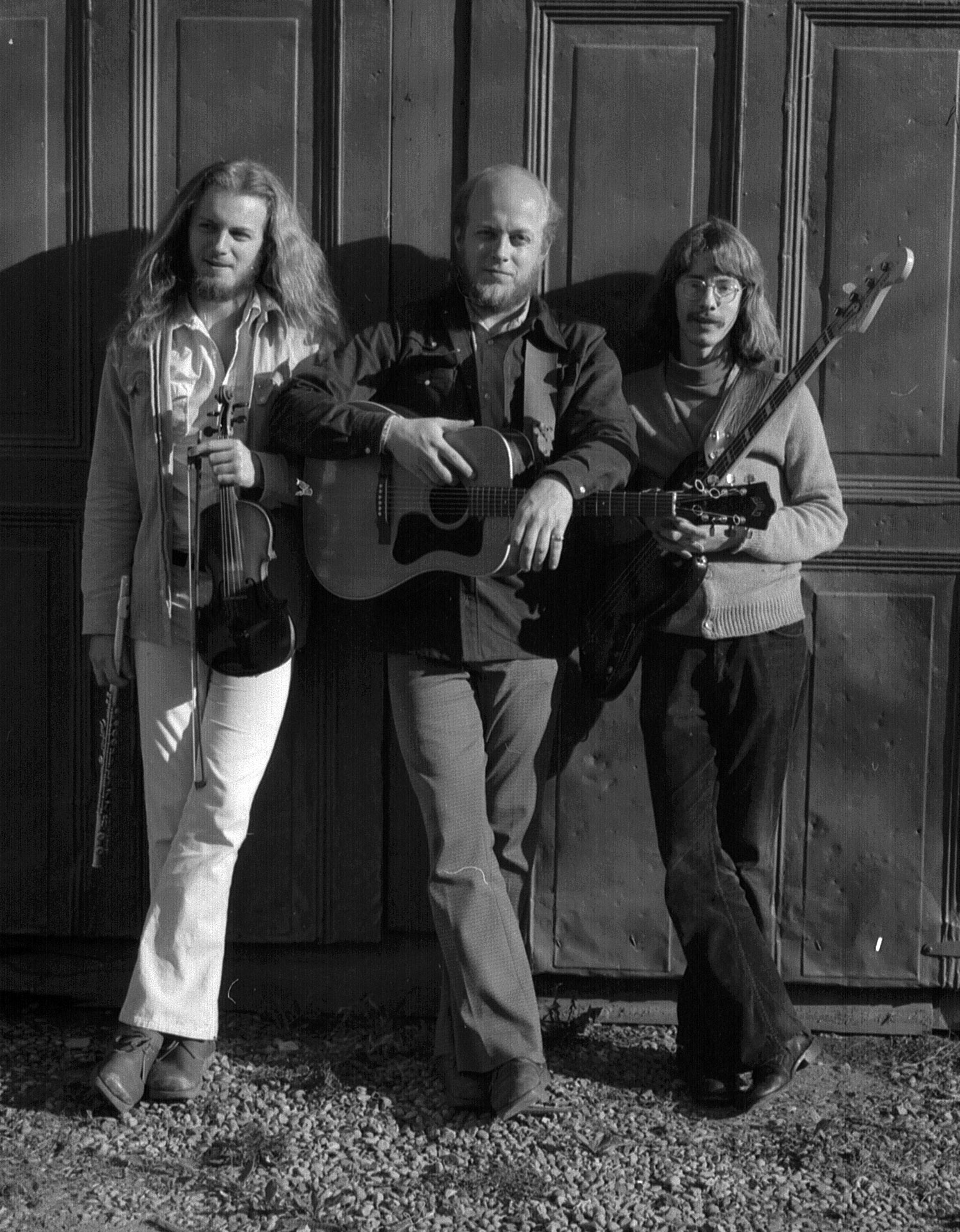
Our gigs with Stan Rogers were pretty humble, small coffee houses and the occasional CBC broadcast, but he was always one with a strong work ethic – no matter how small or non-existent the audience, you do your best show, and in the studio anything more than two takes was an indulgence or sign of incompetence. Also, you take care of your band – your loyal employees, as it were, and if that meant staying at the YMCA rooming house, well so be it, but you did your best. Because of that, I always felt I was treated well and never got on his bad side, and there are lots of stories about his short temper and intolerance… I did feel the odd one out, though, as Stan and Garnet were seven inches taller than me and enjoyed their alcohol. They’d poke fun at me bringing trail mix on the road – “nuts and berries”.
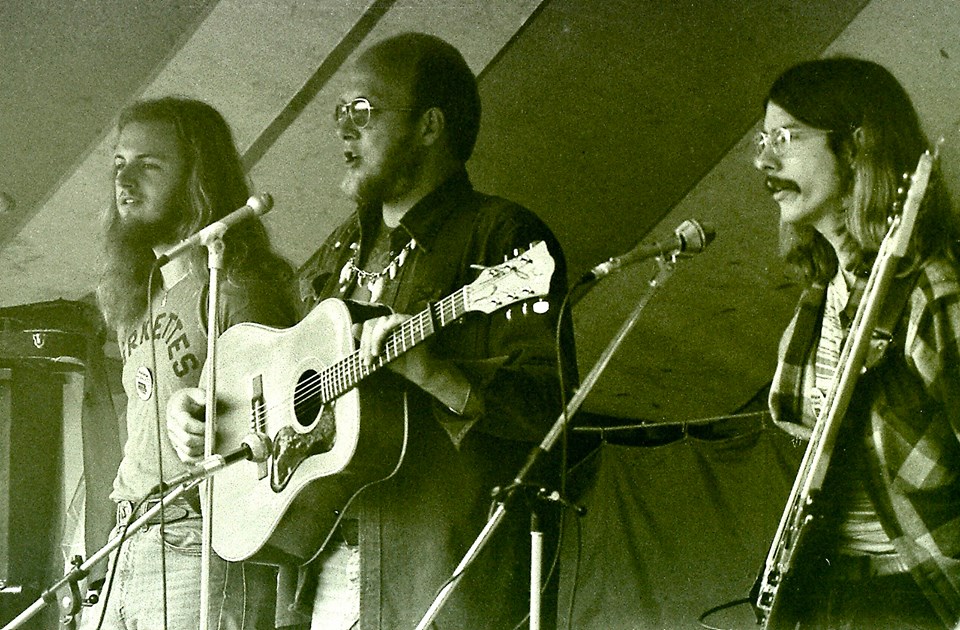
I remember Stan and Cedric meeting and Stan suggesting they get together for a beer sometime, which I thought was most improbable – alcohol was not the intoxicant of choice for the Perth County Conspiracy! On an aside about that, one time magic mushrooms were floating around a bit, which is a pretty happy high, and as I was playing at the Swan I was fascinated by the curve of my bass neck, wondering how the strings stayed clear of the fingerboard….
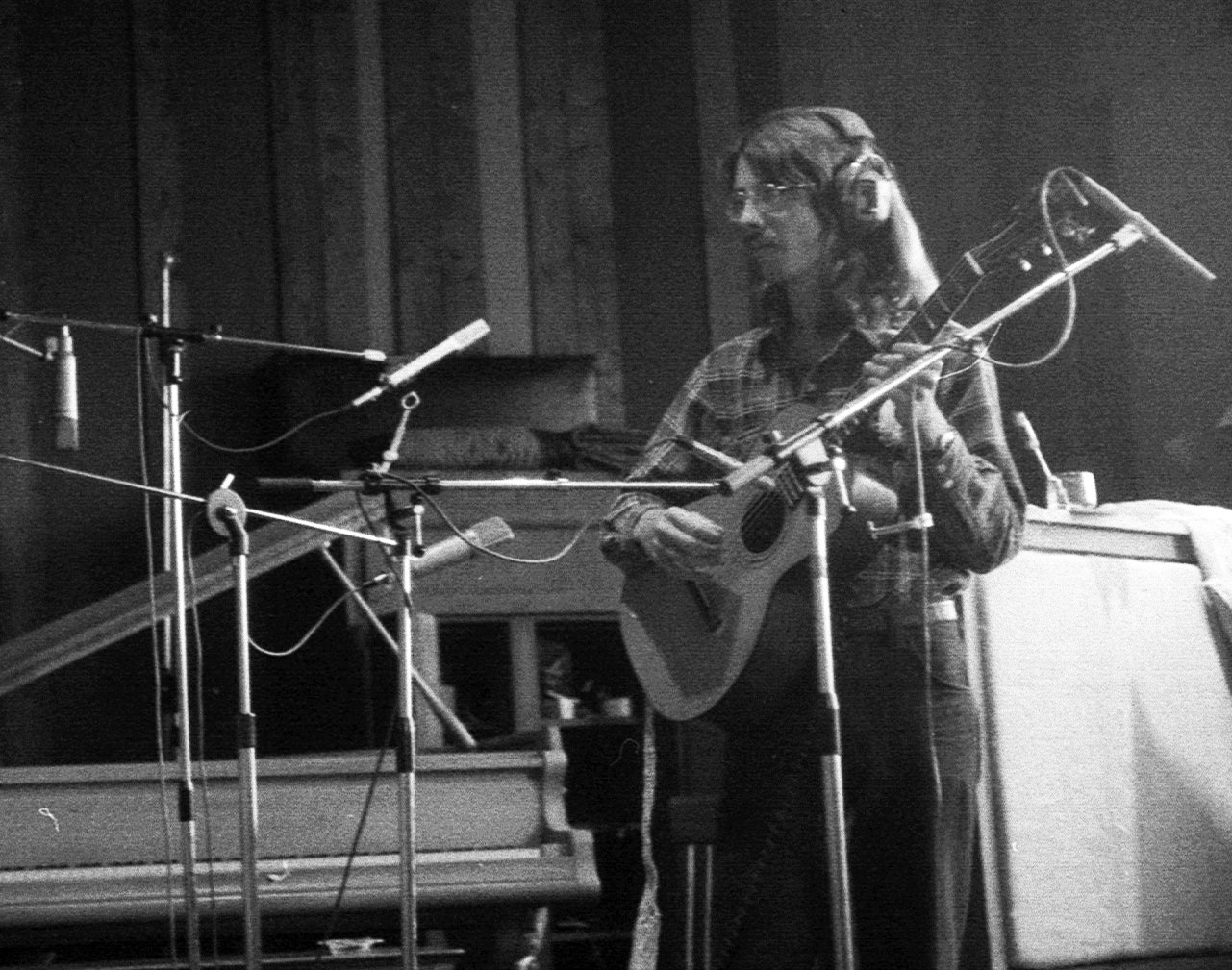
“One of the spinoffs of being in Stratford with the Perth County Conspiracy was a vision of this almost mythical land of counterculture on the West Coast in British Columbia”
At the end of the 70s you decided to move to the West Coast for two years. Would you like to tell us about your move? And can you elaborate on the trio Island, where you were the main soloist?
One of the spinoffs of being in Stratford with the Perth County Conspiracy was a vision of this almost mythical land of counterculture on the West Coast in British Columbia. It was so intriguing and appealed to me as a geographer as well as the musician. I had been freelancing in the folk and singer-songwriter world for a while and was looking for one thing I could get my teeth into and have some adventuring! I was a little tired of being introduced by Stan and others as “my bass player” and feeling a little scattered. In Perth County I had played with Jerome Jarvis and Paul Gellman, and Paul was already in BC and invited us out for some playing, so Jerome and I loaded up his camper truck and drove out in December, 1977, going through Montana and Idaho to Washington State and North, landing on Gabriola Island which is where Paul still lives now. We started rehearsing right away and played small halls for dances all up and down the islands: nice wooden halls, some with a funky upright piano and lots of people dancing, often in a circle all coming together with a “whooo!” Our material was mostly Paul’s, with some of Richard Keelan’s groove-based songs with interesting chords and structures and a few covers such as Jackson Browne’s ‘The Fuse’. Paul played strong piano and some guitar and Jerome drums and percussion, so that again left the bass wide open to play a melodic and soloistic role. It was a very free time of life – I had my own pickup truck with a camper top and sometimes slept in it during trips up and down Vancouver Island, I had interesting music to play and I was able to explore the West Coast which was full of ocean, rocks, big trees, and of course railroad lines to explore and photograph (always on my agenda!).
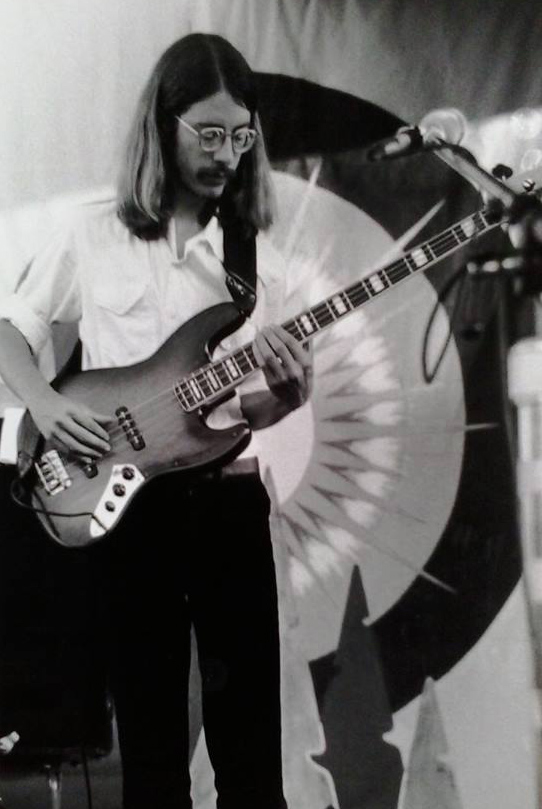
By the way, Huckle (Kelly Cavanaugh) was for a short while a fourth member of Island, as he likewise had the Perth County connection, but I’m not sure if we actually played gigs with him. I know his albums are highly sought after in the vintage market!
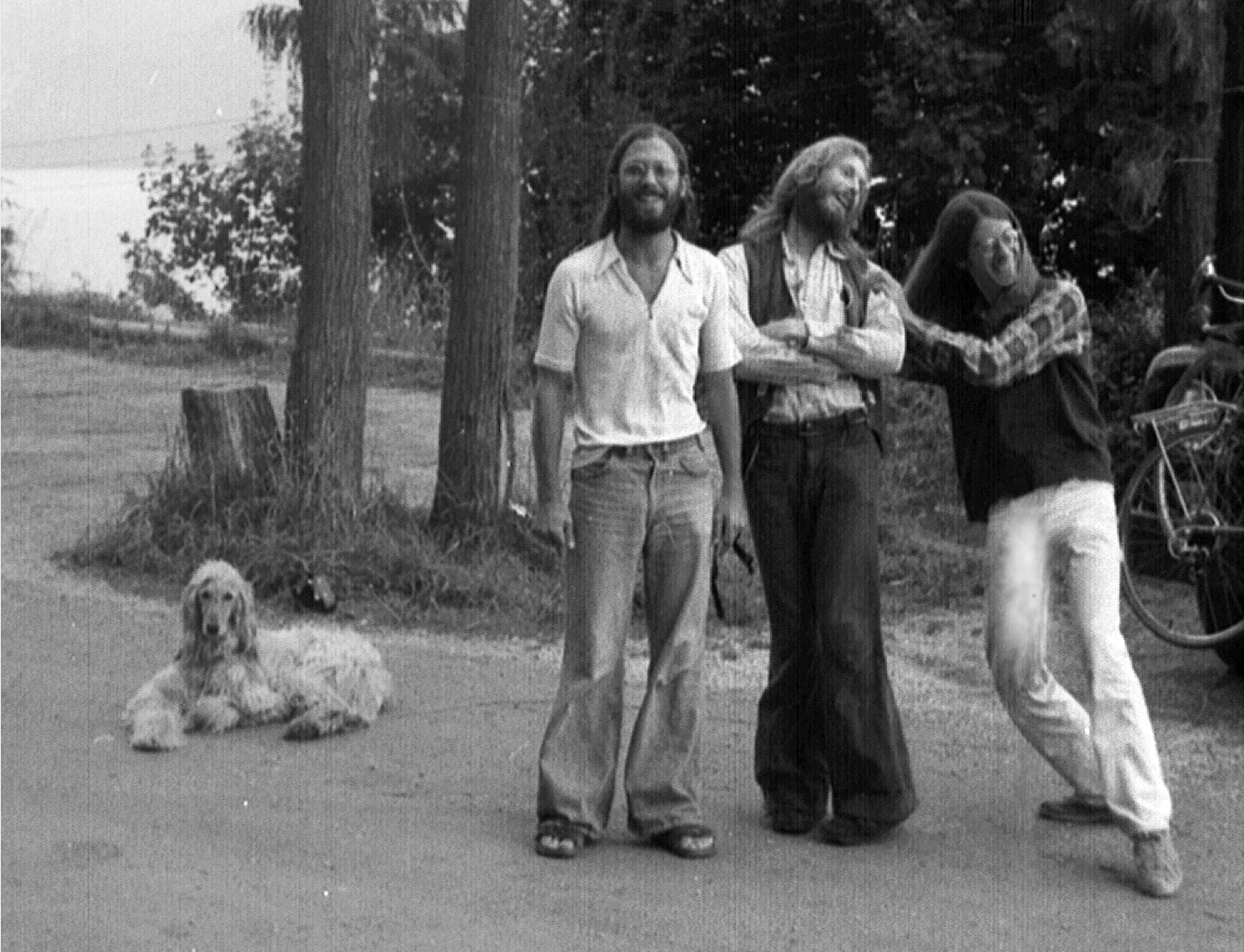
By later 1978, after less than a year, Paul Gellman left for California due to health and other personal issues, and Jerome and I freelanced around, forming another band, Bluebird, with Marianne Grittanni and Peter Walker, but the magic was not there, it being a more functional cover band. Seeing a fairly bleak future playing lounges and clubs, I drove back to Ontario in September/October 1979.
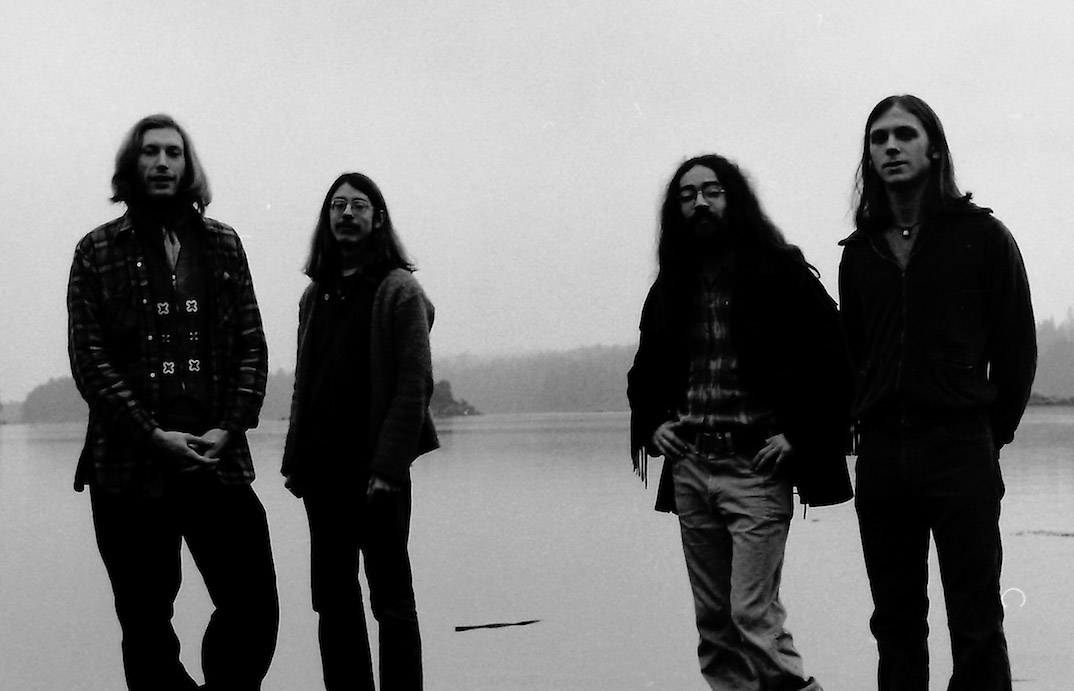
What are some of the most important players that influenced your own style and what in particular did they employ in their playing that you liked?
Right from the beginning it would be Paul McCartney, who played beautiful melodic lines, and James Jamerson of Motown, who also was more hyperactive than most bass players of the time and his sound was ubiquitous though nobody would know his name for another twenty years. But also Jack Bruce of Cream, and Jack Casady of Jefferson Airplane, both of whom had an aggressive and overdriven sound, melodic at the same time, that really made the bands they were in sound different. Rick Danko of The Band was important in a different way – he had a clipped, jerky and almost awkward approach that was still beautiful and his lock with the drums made The Band sound unique. By 1976, though, my attention was all on Jaco Pastorius, who I first heard at Stan Rogers’ house on Joni Mitchell’s ‘Hejira’ LP. I didn’t like Stanley Clarke much, or the bright slapping style that became popular starting around that time, but it was Jaco’s tone, that midrange definition, harmonic sophistication and lyrical upper register that I was in love with, and still am. Richard Bona is a Jaco fan, too, and is such a great musical force. In Toronto, the guy to look for is Rich Brown, who has a brilliant and disciplined harmonic sense and plays things I can only begin to understand, but with all his heart.
How do you usually approach music making?
That’s a hard one! I would say so much has to do with listening, gauging one’s impression of what’s going on, whether it’s playing in a group or by oneself at home. Especially as a bass player, you can be aware of the effect of what you are doing on the ensemble, playing big broad notes of short defined ones, the register you’re in, the lock with the groove, filling in holes…or not! But writing solo, or improvising, is another thing.
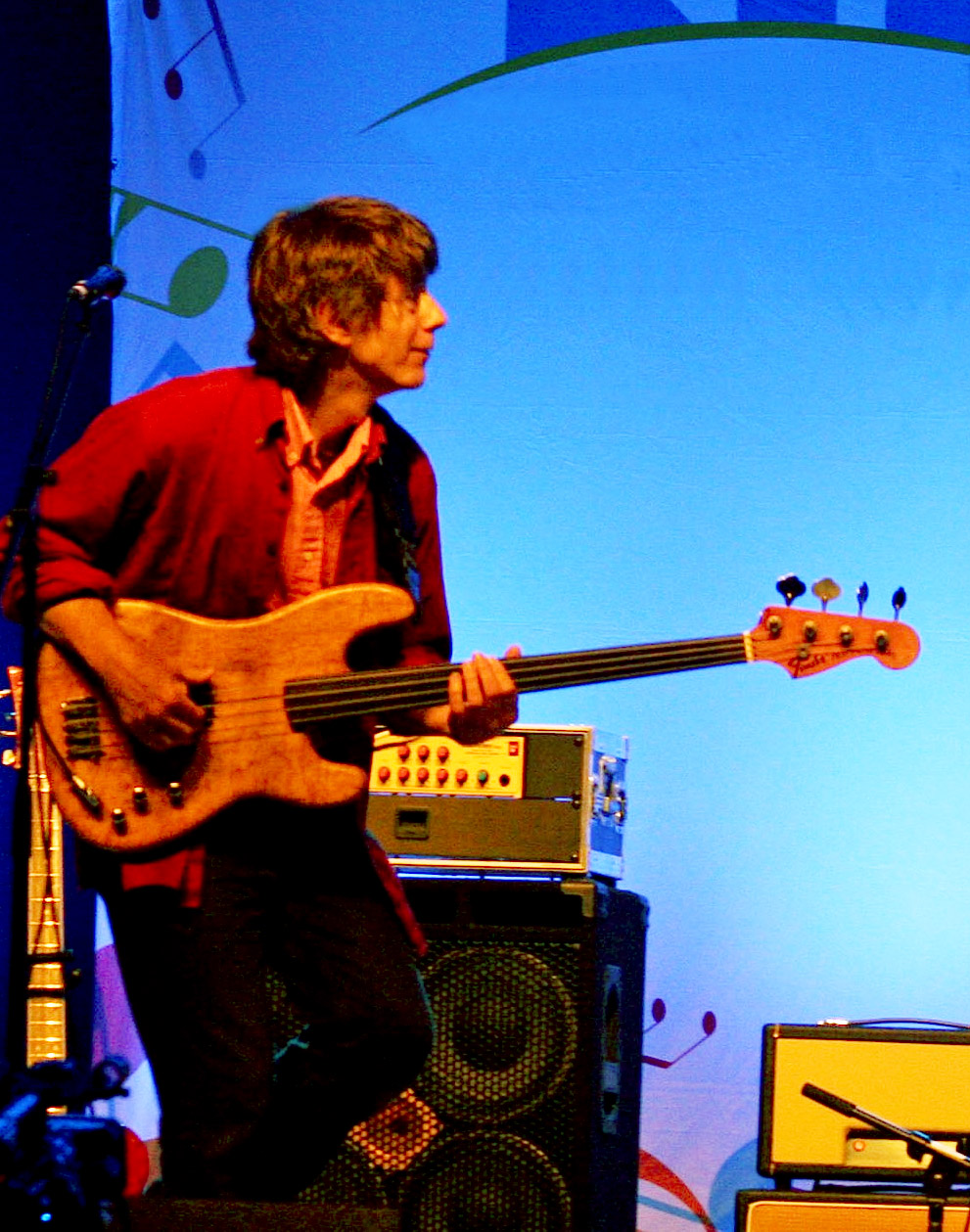
I always have a device handy to record, often just the voice memo on my phone, and maybe the first thing I play at the piano, or picking up a guitar or bass, strikes me a certain way that seems…important, however simple. It is so subjective. So, I have an enormous library of these snippets, which I occasionally go back to to figure out what makes them tick and expand into a piece, but that is SUCH hard work!
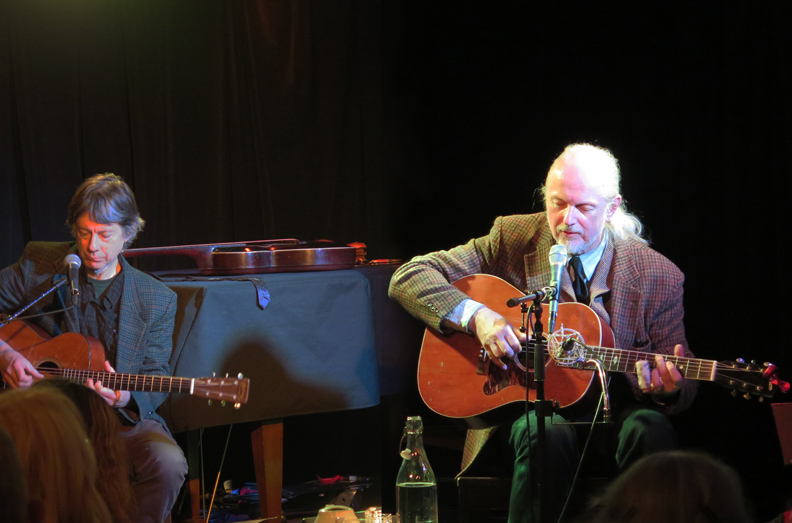
What brought you back to Ontario? Soon you started working with Sneezy Waters, Valdy, Brent Titcomb and Scott Merritt. Tell us about that.
Being on the West Coast of Canada, you’re limited by the US border to the immediate South, and a great distance and the Rocky Mountains to the East, so it really is a small world. There not being a life’s career in playing island dances, I looked at moving into Vancouver and trying my hand there. I had played a bit with Valdy in his backing band The Hometown Band, and done a tour with them, but my style was too quirky for their big sophisticated sound, and I knew I didn’t fit in. I had stuff to learn, and got a new concept of simpler, groovier playing from Geoff Eyre, their drummer.
I knew I still had plenty of connections in Ontario, and it made sense to go back and in a sense, pick up where I left off. With Sneezy Waters I played quite a lot of gigs around Ontario with a full band, especially getting cool unison parts going with pianist Ed Bimm’s left hand. I also was in a theatre production of “Hank Williams – The Show He Never Gave” with Sneezy, who was amazingly focussed on every show.
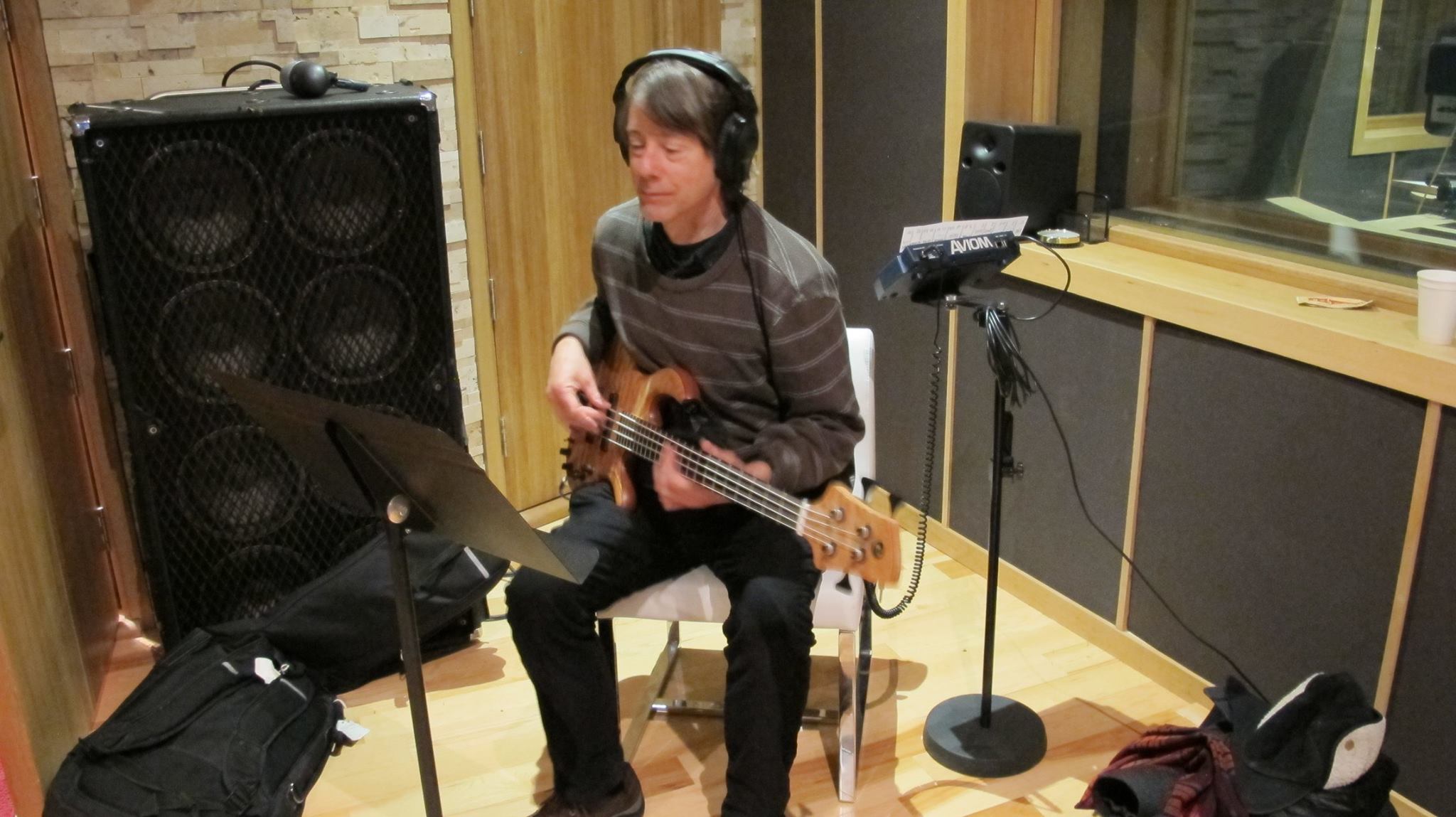
Brent Titcomb I knew from Perth County and folk festivals, and we worked together first in a band context and later many gigs as a duo, which sometimes led to fantastic explorations, Brent being not just a great entertainer but willing to play the space cadet as well. Kind of the same pattern with Scott Merritt, who I met during a CBC session and went on to do many fascinating recordings and shows with, eventually working in the 90s as a duo requiring eleven channels for our live gigs – effects, percussion, different amps and MIDI pedals – it got pretty intense! They are both people I totally admire not just for their musicality but for a kind of integrity and philosophical commitment.
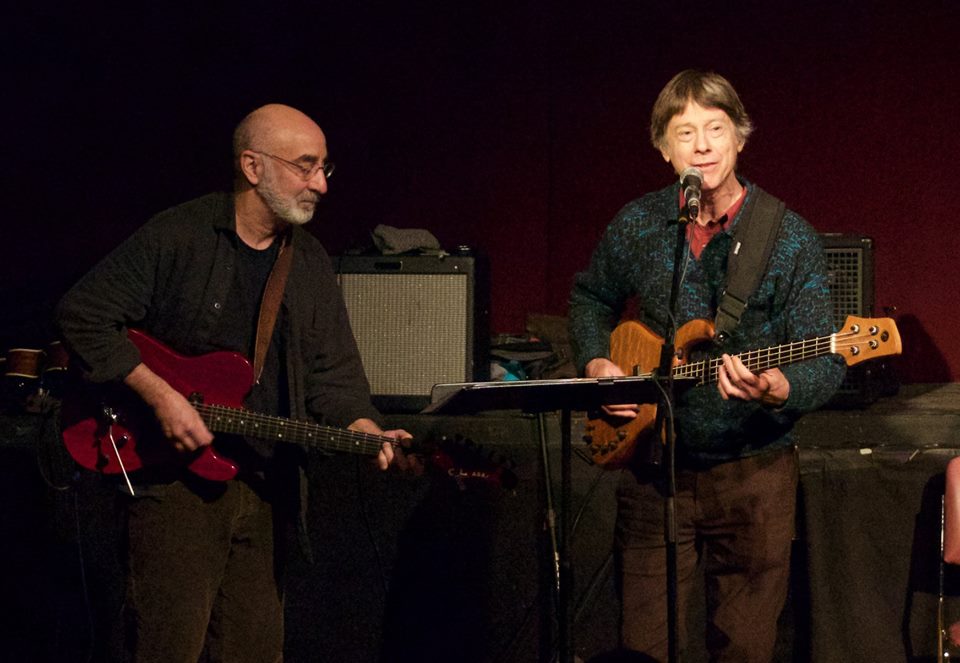
What led to the formation of Eye Music with Oliver Schroer, Don Ross and percussionist Mark Duggan?
I’d have to look this up, but I think it was the fall of 1987 I played a live recording for Fast Folk Underground, who did a monthly LP release of interesting acts – I was playing with Loreena McKennitt, Bob Carpenter and Tim Harrison, but also on the bill were violinist Oliver Schroer and guitarist Don Ross, performing as Eye Music, though without percussionist Mark Duggan. It was another case of recognition – some kind of exploration that we had in common and it seemed completely natural to play together. Both Don and Oliver were evolving very unique styles on their instruments right then, so it was very exciting music though apparently hard to describe to any prospective bookers! In 1988 we played the Montreux Jazz Festival, with Chick Corea playing the big room downstairs, which still seems rather incredible. The 24-track tape of that gig is currently being mixed by Don Ross in Dolby Atmos, and though Oliver is no longer on the planet we might do some more playing, hopefully soon! Oliver Schroer was a huge bringer-together of music but also people, and many of my closest musical relationships can be traced back to his influence. He was an inspiration in his fearlessness – not afraid to try the wackiest idea, and there are many of us touched by his vision.
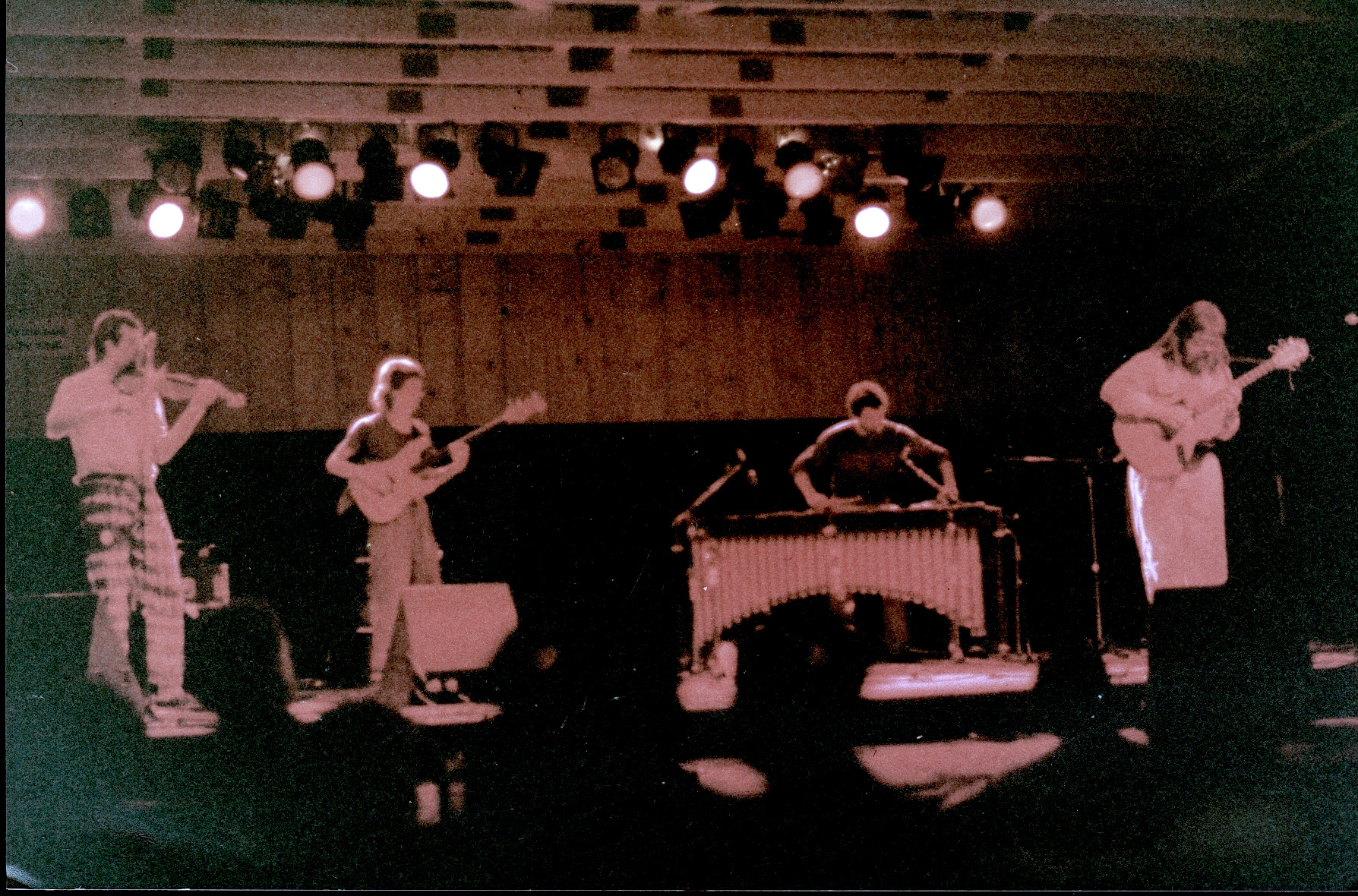
It’s pretty much impossible to name all of your collaborations. To name a few Daniel Lanois, Roma Baran (Laurie Anderson), Arthur Barrow (Frank Zappa), John Switzer (Jane Siberry), Stacy Heydon (David Bowie), Paul Mills (Stan Rogers), and Steve Rodby (Pat Metheny)… Gil Scott-Heron, David Sanborn, What are some of the highlights you would like to mention here?
Wow, so much to learn from these people! And so many different attitudes and techniques for making music! The Gil Scott-Heron gig was on the Calgary Folk Festival mainstage, and I had played a workshop that he was in, backing James Keelaghan. When Gil played, I played along, and afterward Kerry Clarke, the artistic director, said Gil would like me to play his main set. So it was just me (on fretless bass) and two percussionists: I watched his left hand like crazy and as usual had the freedom to play fills and lines once I knew my way around the tunes. I think there was some, um, misdirection of the funds for him to bring a band, and rehearsal was non-existent….but playing with him was solid – he knew how to lay it down on the Fender-Rhodes.
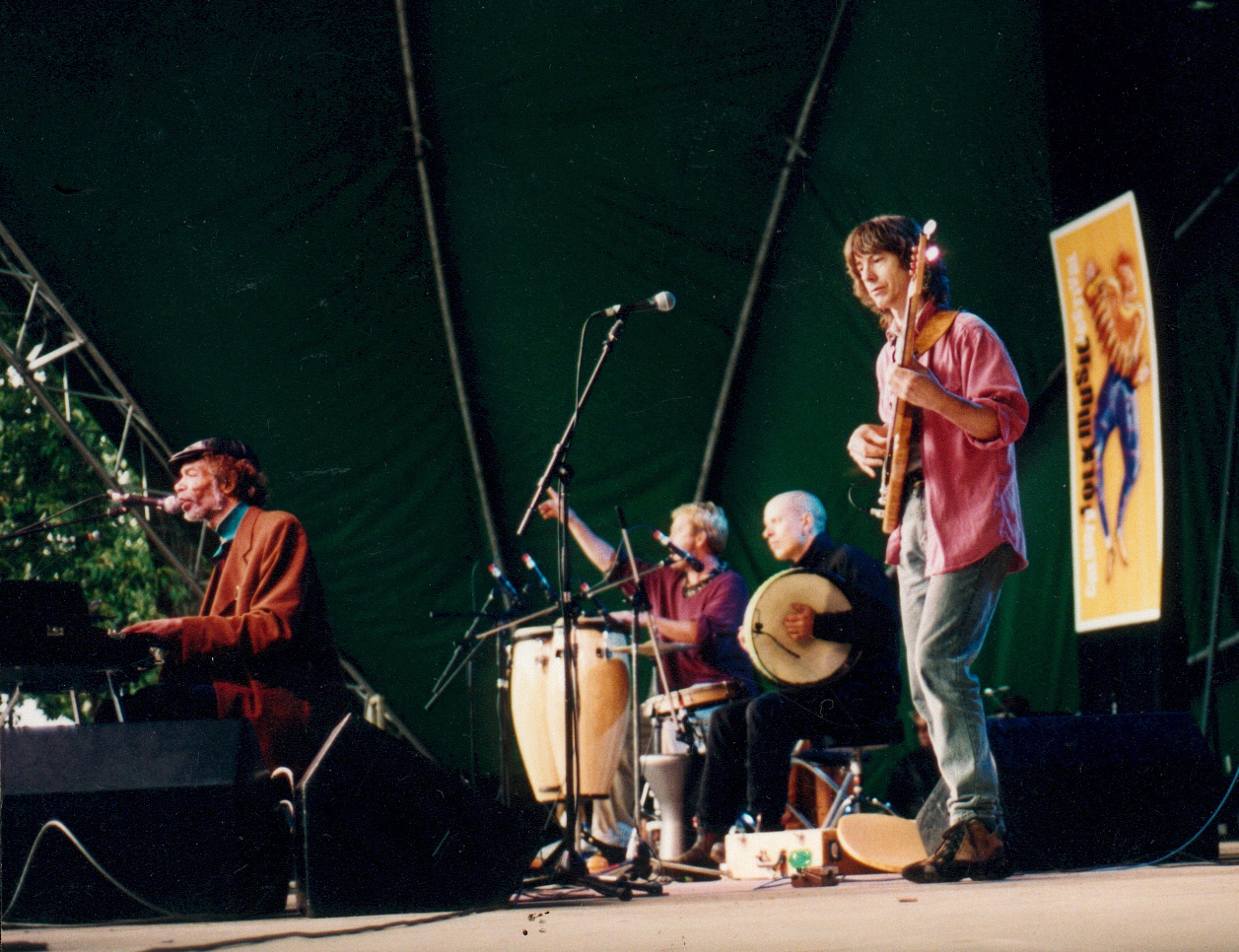
I was doing some sessions with Galen Weston (a fusion guitar player who had his own studio in Toronto) who had a gig at the South Coast Jazz Festival and had invited David Sanborn as a special guest. So again, just one gig, but got some good rehearsal time in standing beside David S and pointing at things on the charts with him. It was that same connection that led to working with Steve Rodby, who was not only Pat Metheny’s bassist for decades but also managed a lot of his sessions and acted as organizer – a great producer who knew how to nudge us in the right direction on the floor with a positive attitude. I’ve always been a little self-conscious of my lack of disciplined musical training, and when it came up that I hadn’t actually studied anywhere formally he said “ah, so you’re the real deal!” – which gave a nice and much-needed positive spin on my self-image!
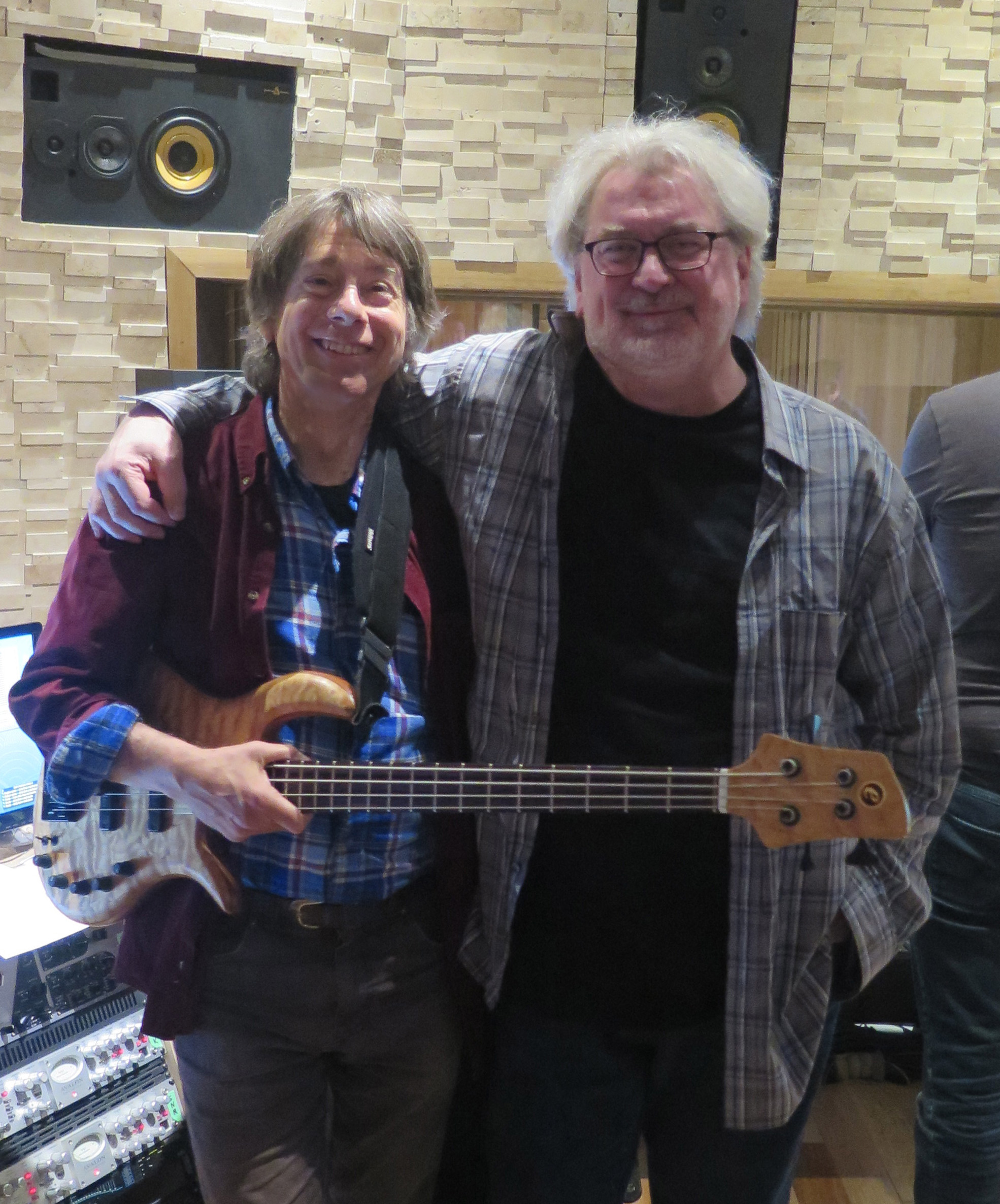
The Daniel Lanois connection was in the late 70-early 80s at Grant Avenue studios – I did quite a few sessions there for various projects and Dan was “just” the engineer, but a very capable one full of little suggestions for ways to make music better. One very late night session for Scott Merritt he had percussionist Matt Zimbel hit one small bell, and using the Eventide Prime Time delay and who knows what else Dan made about five minutes of ascending, loop-the-looping, diving, oscillating celestial sound. It didn’t get used, but it’s still in my brain…
Another important person for the last ten years or so has been Donné Roberts, a guitarist/singer/producer originally from Madagascar who I connected with at the Owen Sound folk festival where he was playing with the African Guitar Summit. Somehow it’s been one of those times when we recognized a common musical ground: we’ve played a zillion gigs and recorded quite a bit as well.
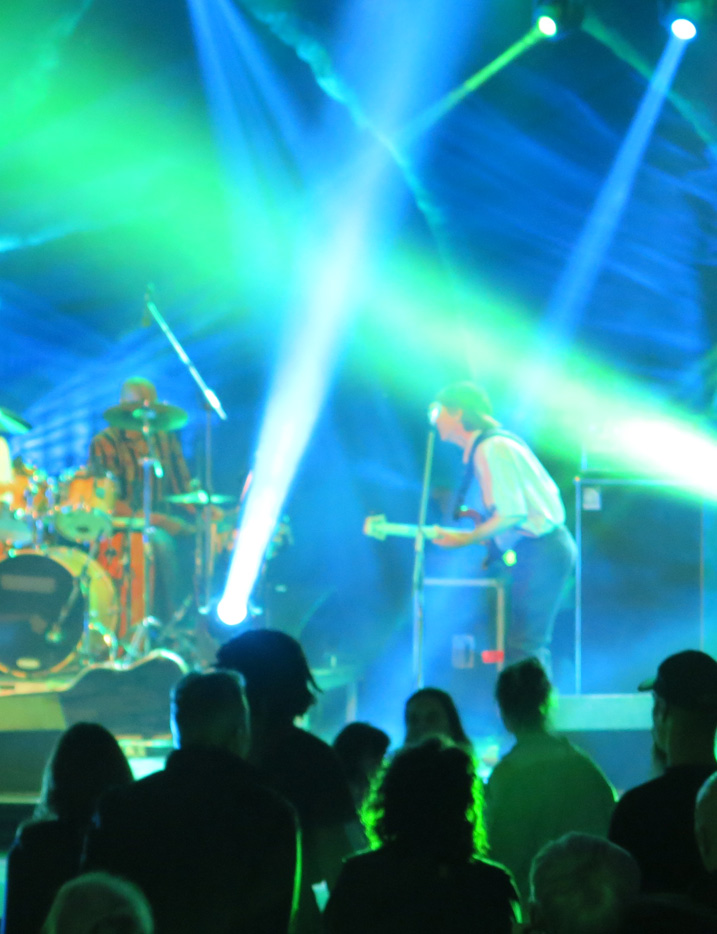
Would you like to share some further words about the concept behind the Confabulation ensemble and the more recent Oriana Quartet?
I like to think of these projects as music that needed to be played – asking myself what I would like to hear and trying to realize it from there, so it follows through from Eye Music and Oliver Schroer’s work in that it really doesn’t fit a convenient category. The result, of course, is music “between the cracks” – too outside for a folk audience and not recognizably jazzy enough for jazzers. It’s a very personal concoction and I’m always happy when someone else “gets” it. The first Confabulation gigs were in 2008, and very much influenced by Oliver and my explorations of jazz harmonies, with part of the mandate being to incorporate both Cedric’s spoken word and some of the youthful players that Oliver had mentored, notably Jaron Freeman-Fox and Emilyn Stam.
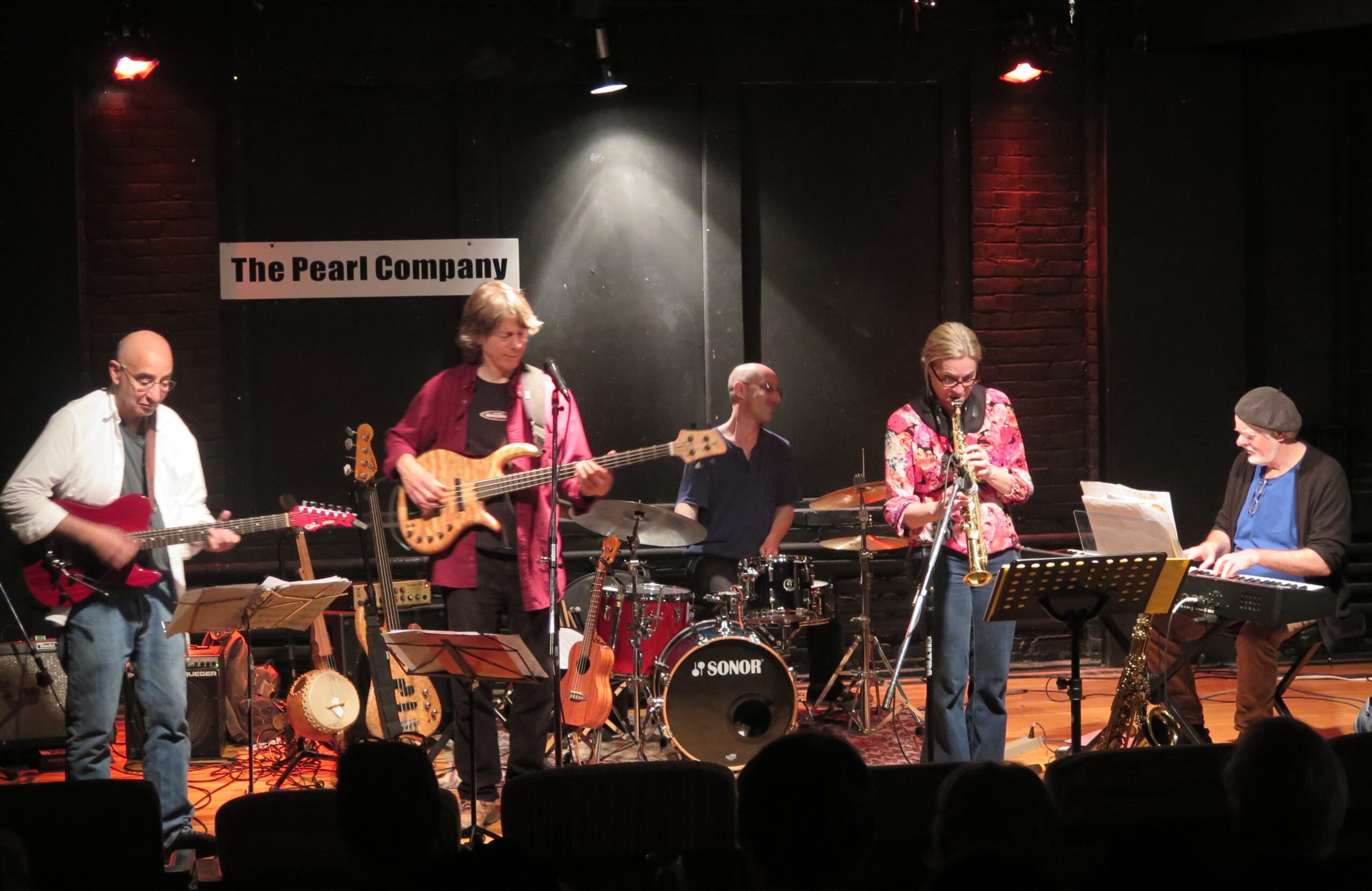
Usually a six-piece with fiddle (Jaron or Anne Lindsay) and saxophone (Richard Underhill or Colleen Allen), it’s a pretty noisy affair. The Oriana Quartet takes a chamber music approach, with no drums and a very specific lineup of Fern Lindzon (piano), Anne Lindsay (violin), Colleen Allen (saxophones, flute, clarinet) and myself (electric bass, guitar, mandolin) with written arrangements though we are also comfortable improvisors.
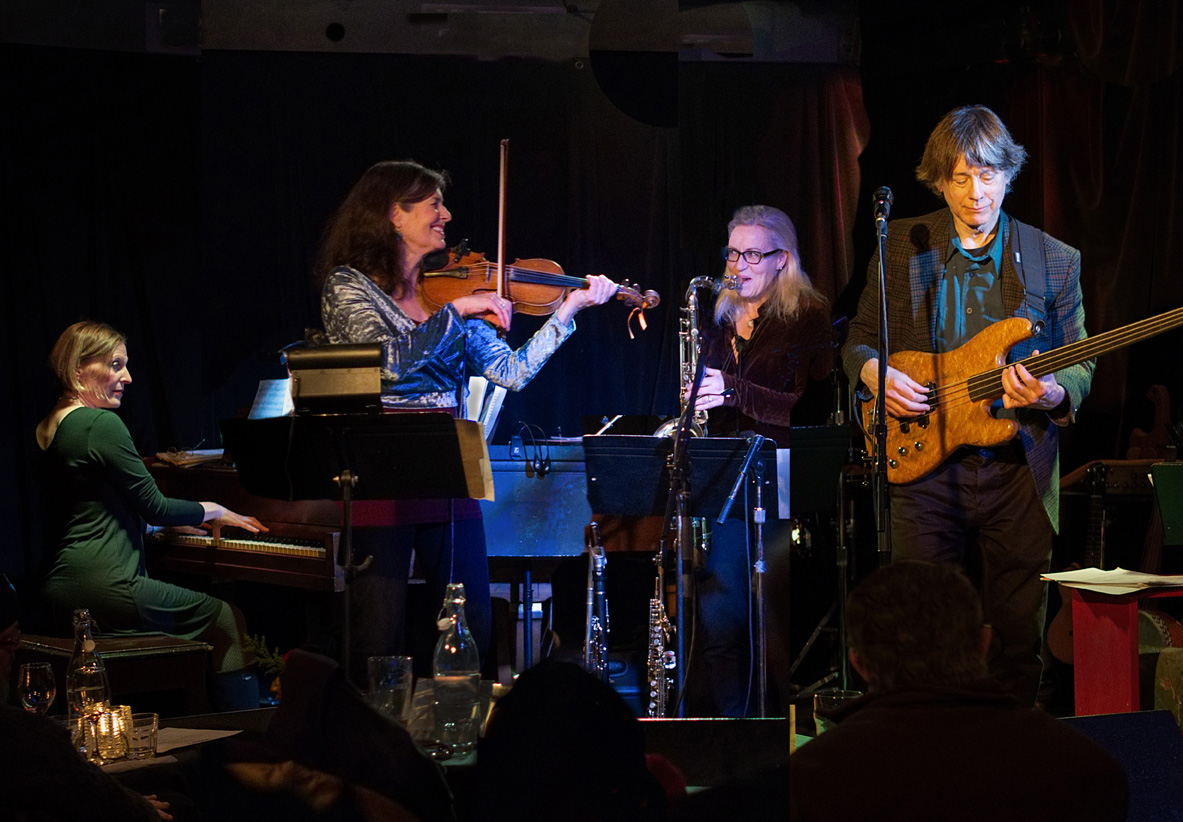
Your name also appears with production credits. How did you first get involved with that and engineering?
Back in high school, my Dad was an electrical engineer interested in audio and had a reel-to-reel with sound-on-sound on which we could overdub stuff, making these crazy tapes after school (which I still have!). So there’s the groundwork, though I didn’t get into “serious” recording until the 80s when I got my own Teac 3340S and later an Atari 1040 computer to handle MIDI. By the 90s I was doing music for low-budget cable television shows which was an excellent way to earn a living with small children at home! I was able to play various real instruments in addition to the MIDI – so I could add banjo and harmonica if the show was about old-time wagon trains, or electric guitar effects if we needed that. From there I went more into singer-songwriter CD production, still able to do a lot myself, recording and playing all the instruments, mixing, doing the cover art and even mastering if there wasn’t the budget to go outside for that. Still, it’s a real challenge to play, engineer and direct a session with multiple players so I prefer to go to a “proper” studio for bed tracks if the money allows. We’re lucky in Canada to have effective grants available to non-commercial artists like myself for that kind of thing.
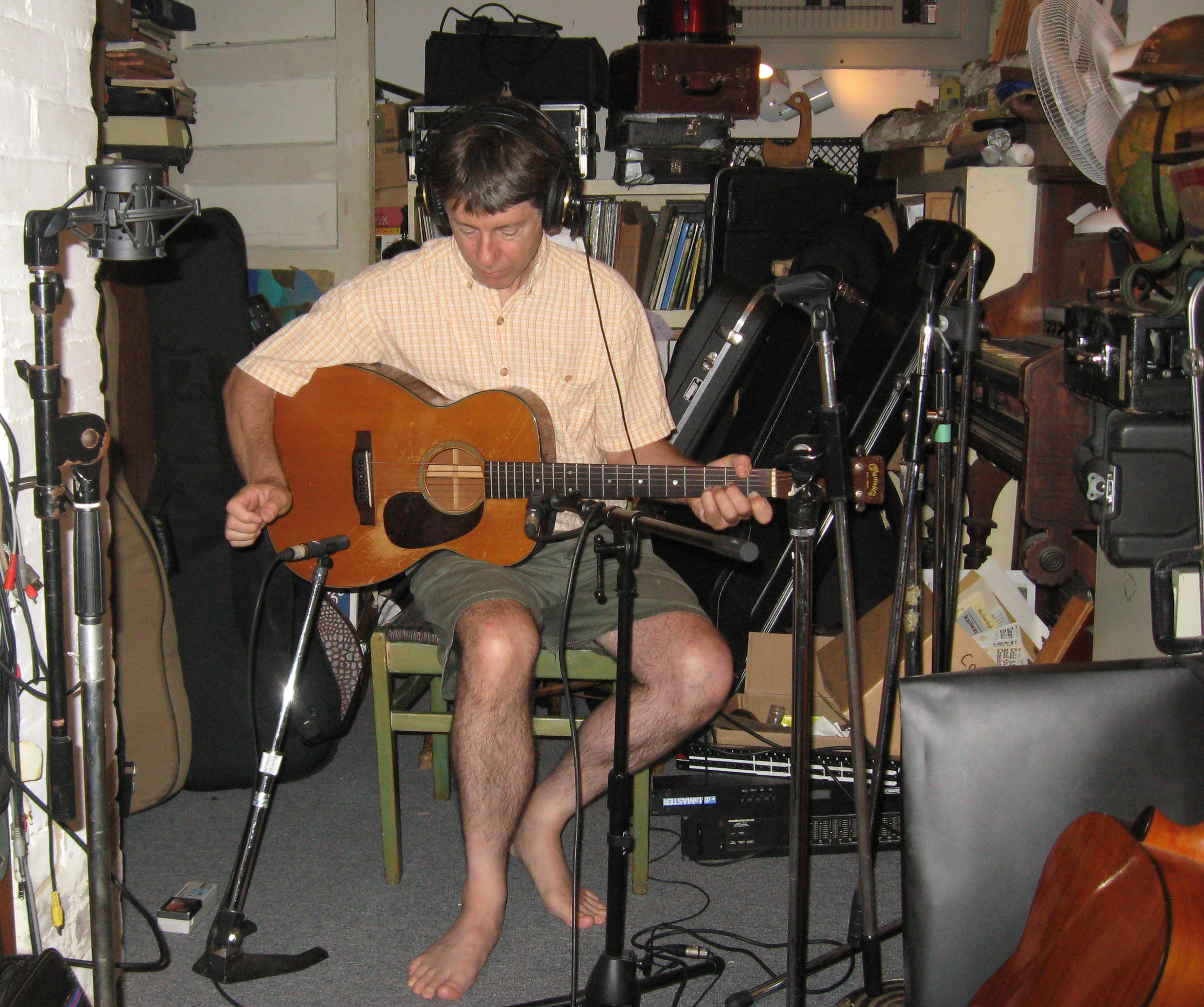
What are some of the more recent projects?
During Covid so much work evaporated – I did a few sessions in which tracks were sent back and forth by ftp, but I was able to explore things for myself that had been on the back burner, resulting in a series of videos called ‘The Imaginary Album,’ sort of a catch-all for songs, whimsical instrumentals along the lines of Bartok or Satie, and more experiments with sound and dabbling in animation. I did complete the music for a full-length documentary called “Rebel:Angel” for film-maker Chris Lowry, which was a challenge in that I needed to recall those skills necessary to work on someone else’s project! I’ve also started to do some live touring with well-known Canadian songwriter James Keelaghan, another case of reviving a previously-known skillset!
You are also collecting many photos from your local scene, reel-to-reel tapes, cassettes, et cetera. Are you in the process of digitizing and cataloging it and what does that look like? Are you going to send it to the National Library?
Just before Covid hit I was talking with the University of Toronto Archives about handling my reel-to-reels, and I need to resume that, re-catalog my materials, and expand into cassettes and other stuff. I digitized the most meaningful ADAT tapes before giving them away and donating my machines, and I need to complete scanning my negatives and slides though I’ve done a lot already. It’s tempting to make a physical book, but not sure if the demand would be there for any kind of production run.
Are there any less known recordings, artists or unreleased records that got completely buried with time, but you would like to mention and write a few words about them?
I’m keen to see the Eye Music material from Montreux released once Don is happy with the mixes – it’s kind of a missing link in my version of Canadian music history. One of my own productions I enjoyed working on was a 2002 CD with Heather McLeod, totally charming voice and writing. I was in an 80s Toronto band called Klo that I recently rediscovered via cassette – adventurous and energetic! And then there was Bob Carpenter, whose songs transcend time, his LA-produced album was buried until released by Stony Plain in the 80s: he’s been re-discovered a few times!
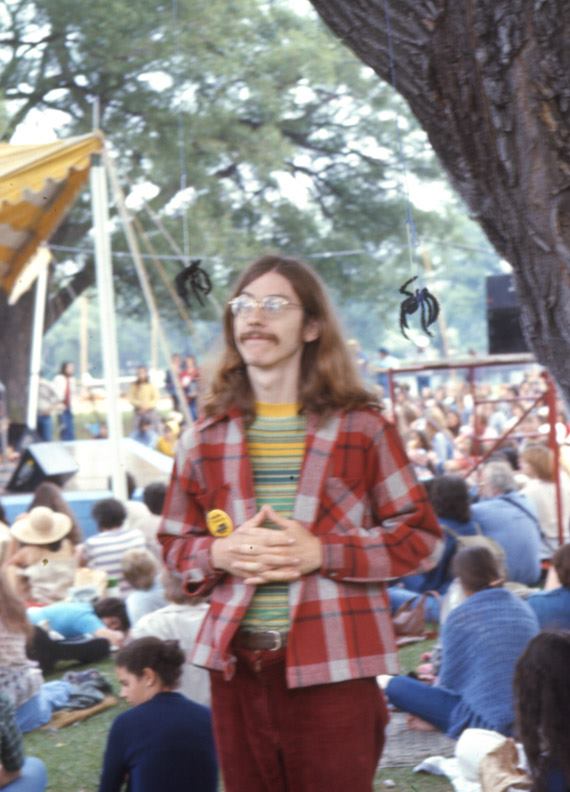
Thank you for taking your time. Last word is yours.
Music is vast!
Klemen Breznikar
Headline photo: David Woodhead with older guitar player, Smith’s Falls, 1973
David Woodhead Official Website
Perth County Conspiracy | Interview | Terry Jones

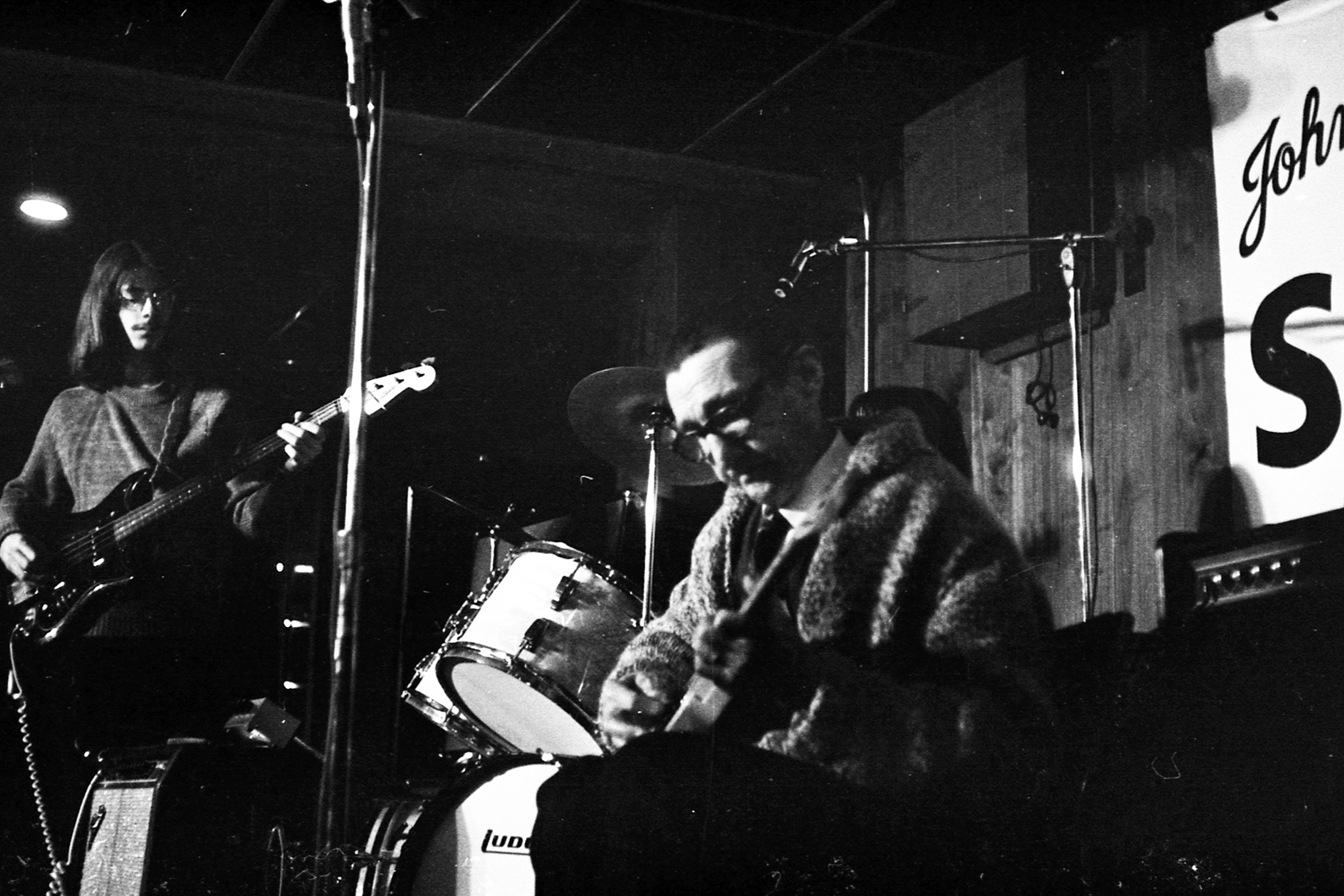



How wonderful to learn so much about your musical history David! Might I add for those who have never met David, he is a rare and wonderful human, always with a smile and kindness to all he meets.A happy soul on the planet with much love!